May #12: Fool's errand
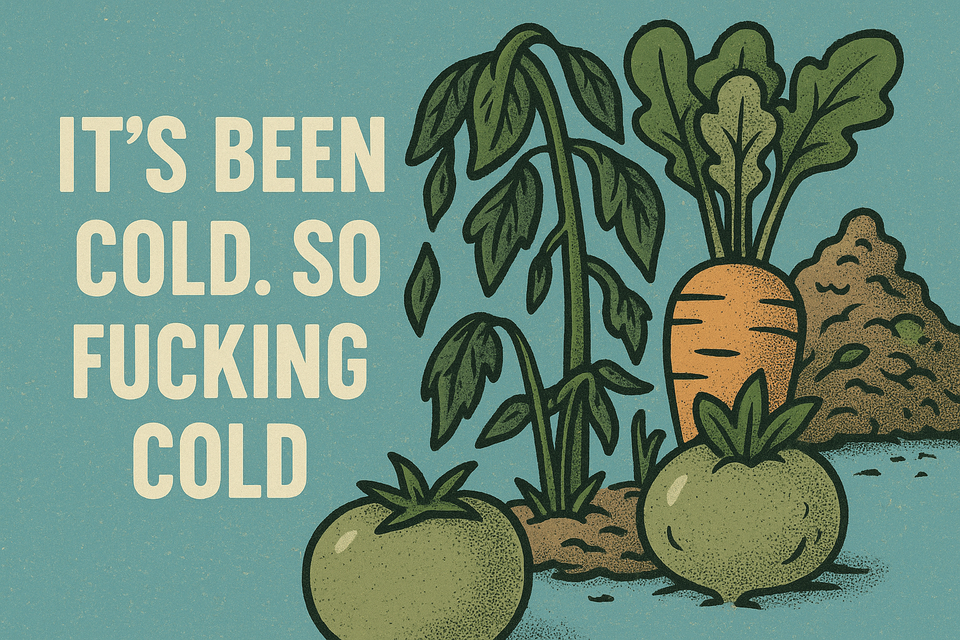
It’s been cold. So fucking cold. This has been the coldest May in the past couple of years, and I wasn’t ready at all. Last year, I was able to move tomatoes outside around May 4. This year? Oh boy, May 24. Until recently, every single day, the temperature dropped below zero, threatening to kill everything. And this is really annoying because May is my favorite month exactly for this reason. Everything grows outside, and finally, the effort pays off. Well, this year only partially.
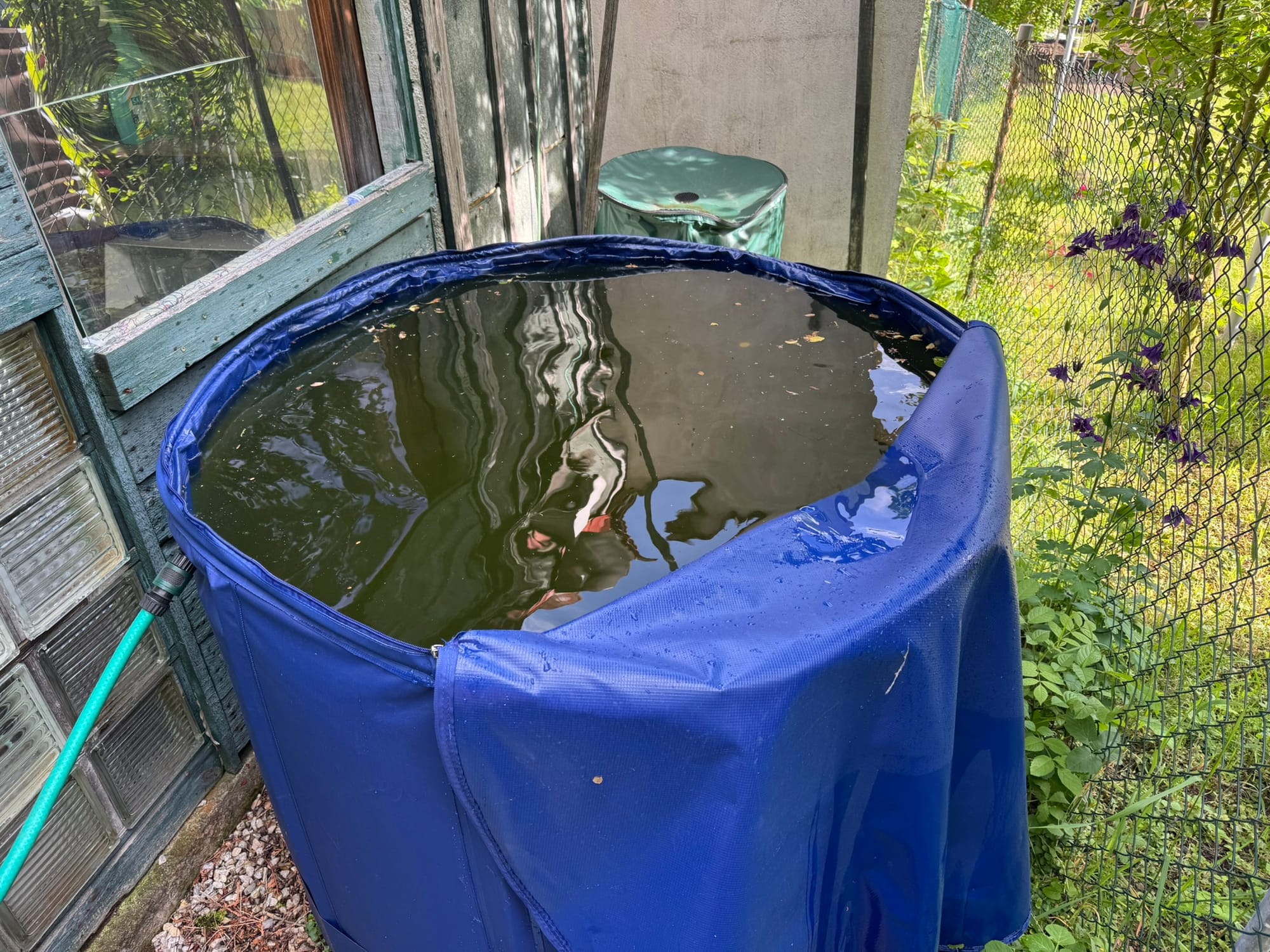
It also didn’t help that I got seriously sick twice this month. Once I got food poisoning and was bed-bound for a few days, and the other time I got COVID-19. Yes, it still exists. The latter thankfully didn’t prevent me from gardening, only from shopping. So yeah, my favorite month is shit this year.

But now that’s over, and we can finally focus on the bright future.
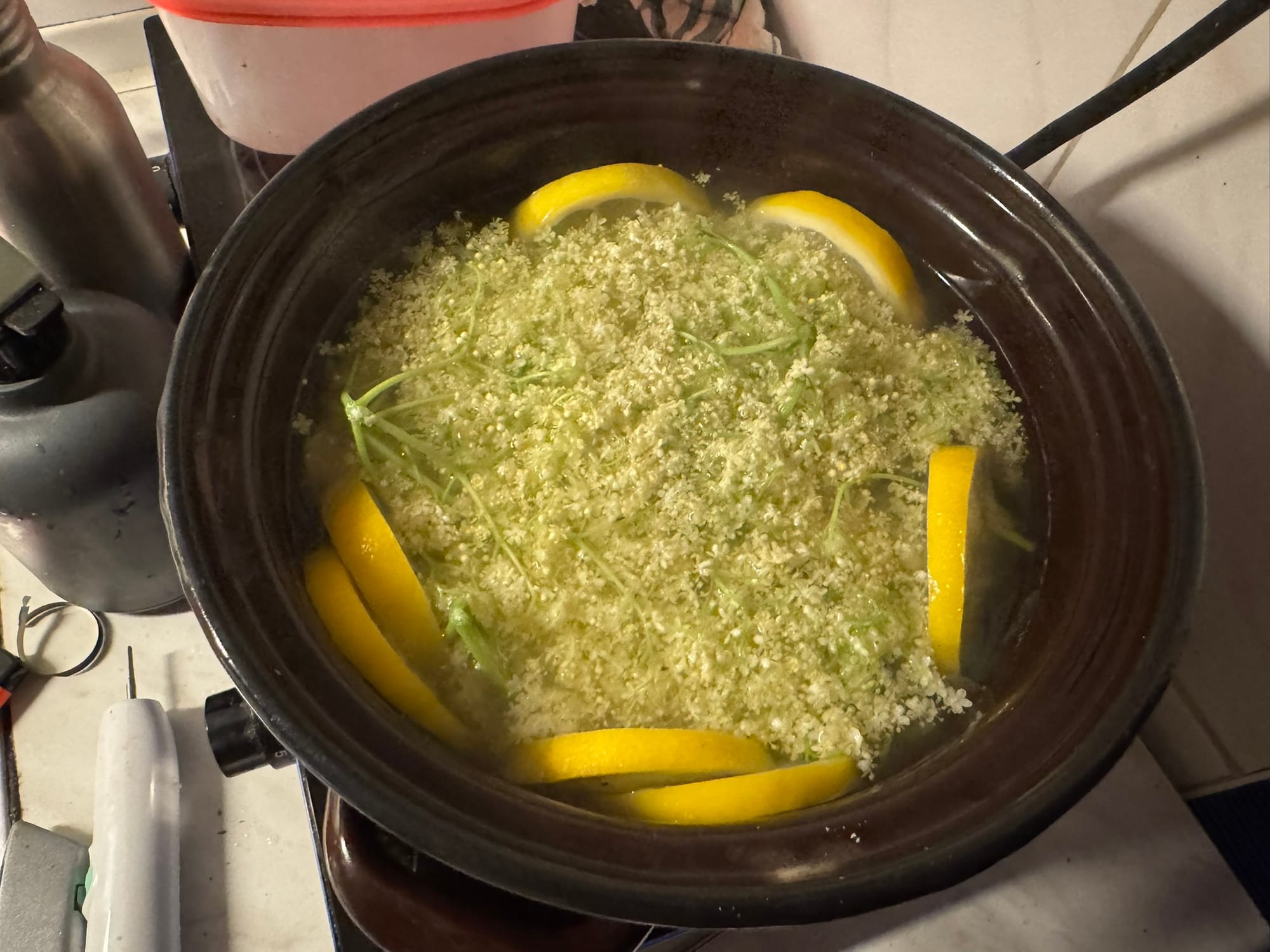
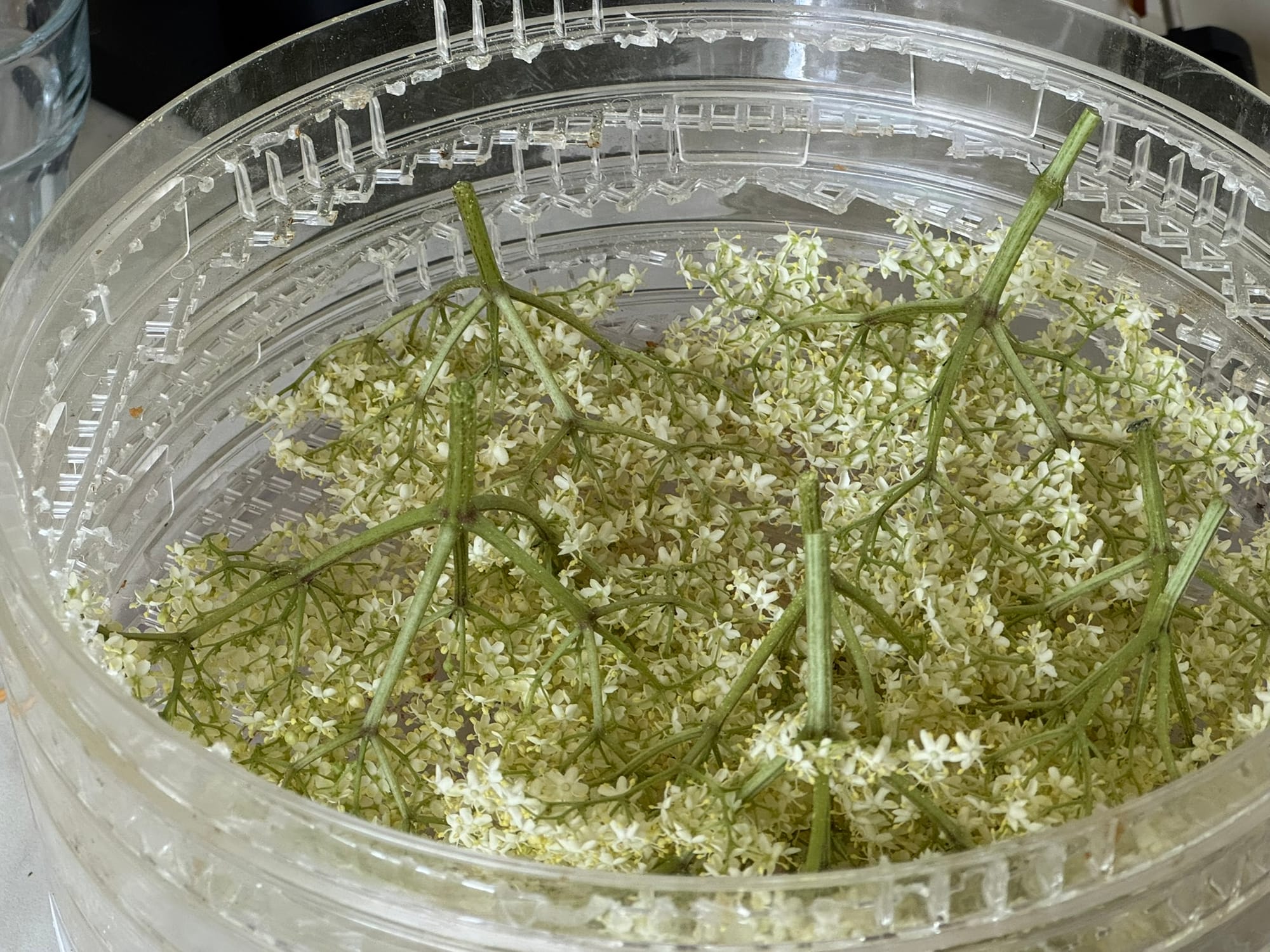
The May is also a month of elderberry. At least here.
the greenhouse heathouse
You might remember my attempt to heat the greenhouse back in March. The uncommonly cold May gave me an idea to try another method of heating. Well, one method.
Many people use manure and compost for heating in greenhouses. The decomposition of organic matter produces quite a lot of heat. So much, in fact, that wet grass clippings will produce steam. This usually requires a large pile of compost, at least a cubic meter, but I don’t have that luxury, so I decided just to give it a shot with a tiny pile.
Steaming pile of fresh of alive compost.
And in fact, yes. It works, and the core produces heat. A lot of it. I can’t say how much it helped raise the temperature in the greenhouse, but now I have some hopes for winter and will try to heat the greenhouse through it to grow some cold-hardy veggies.

The situation at home got a little out of hand. I had to make an executive decision and move the peppers outside in mid-May. It was still very cold at the time, but I needed the space for salad cucumbers.
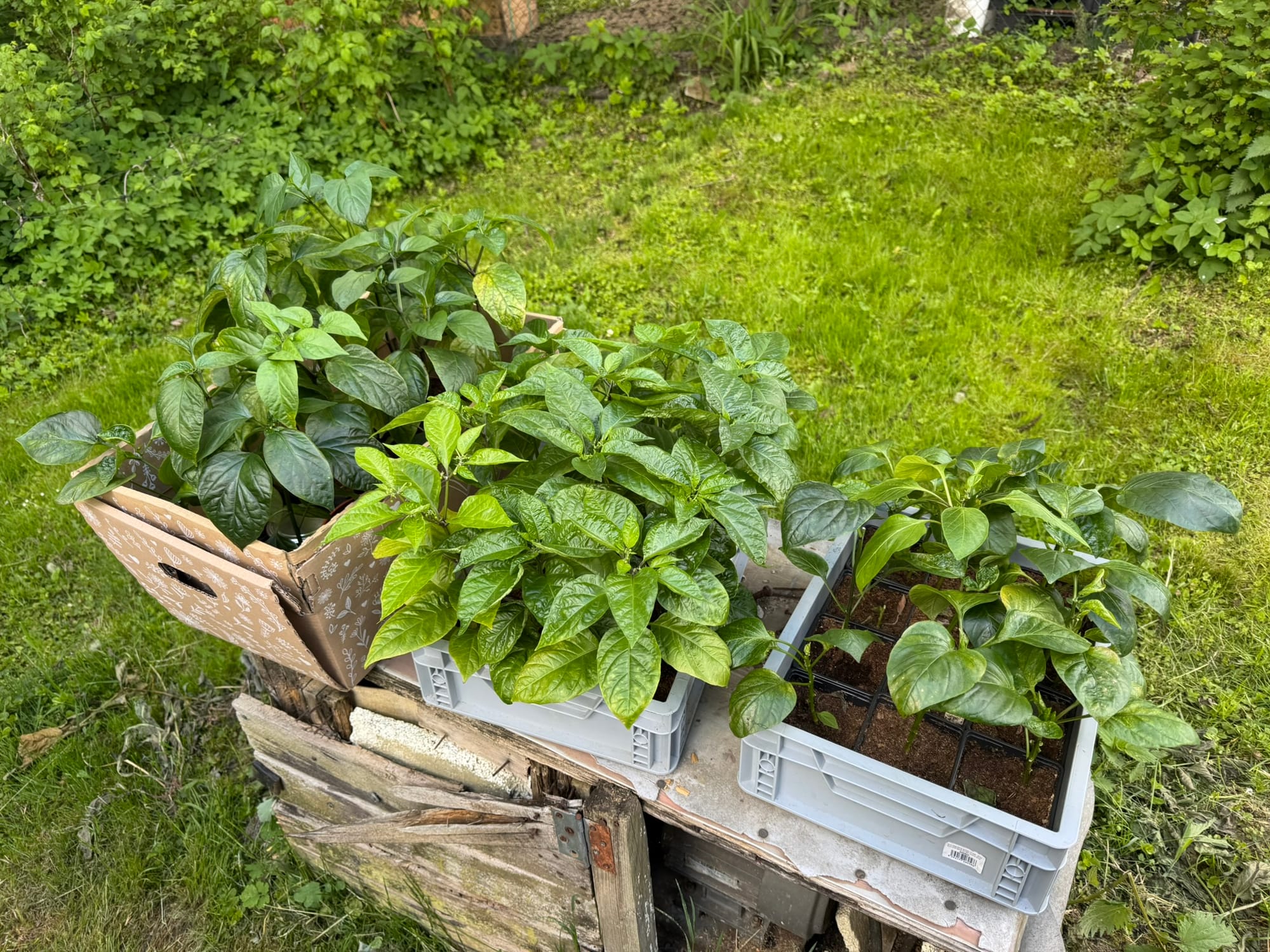
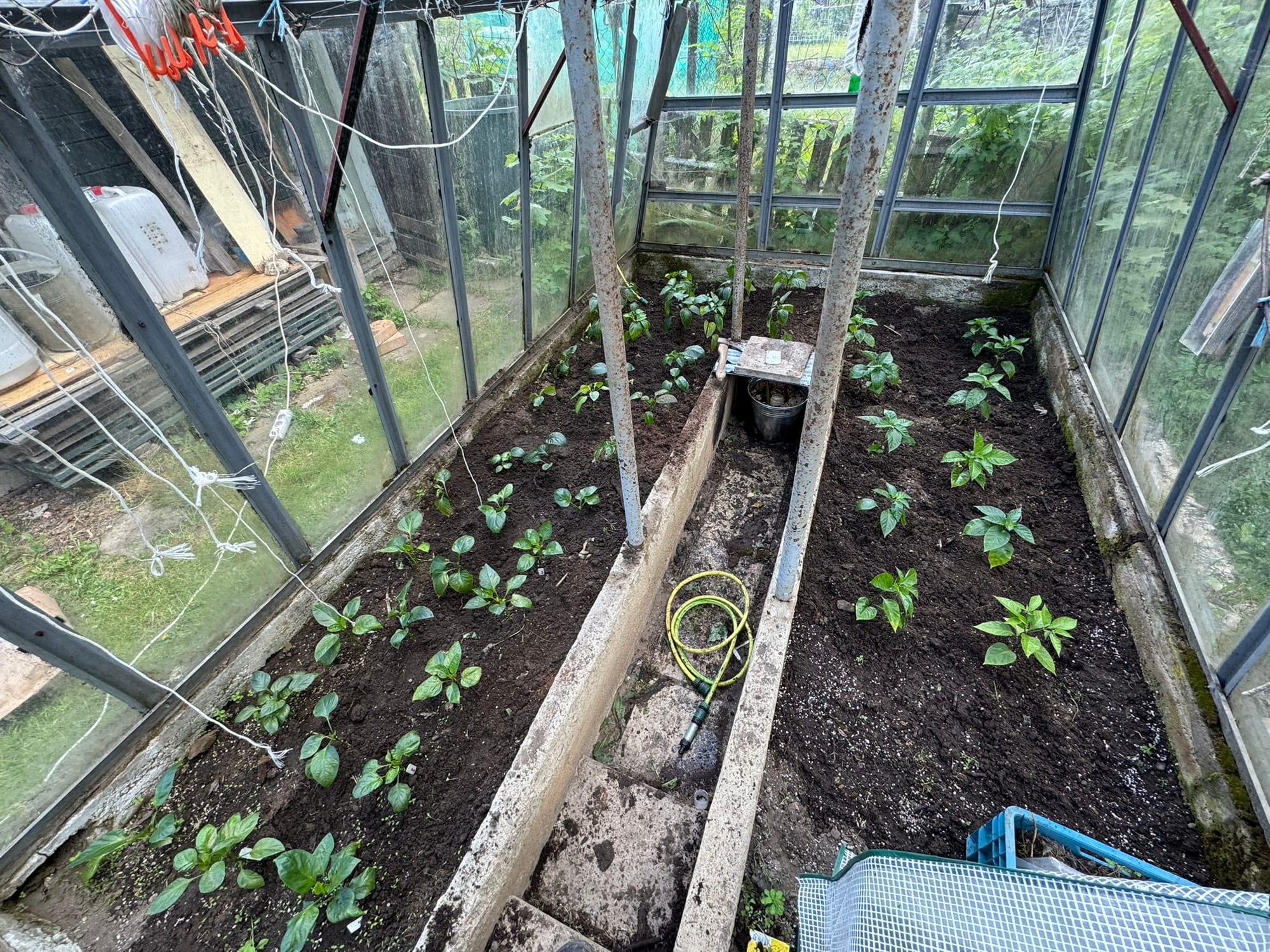

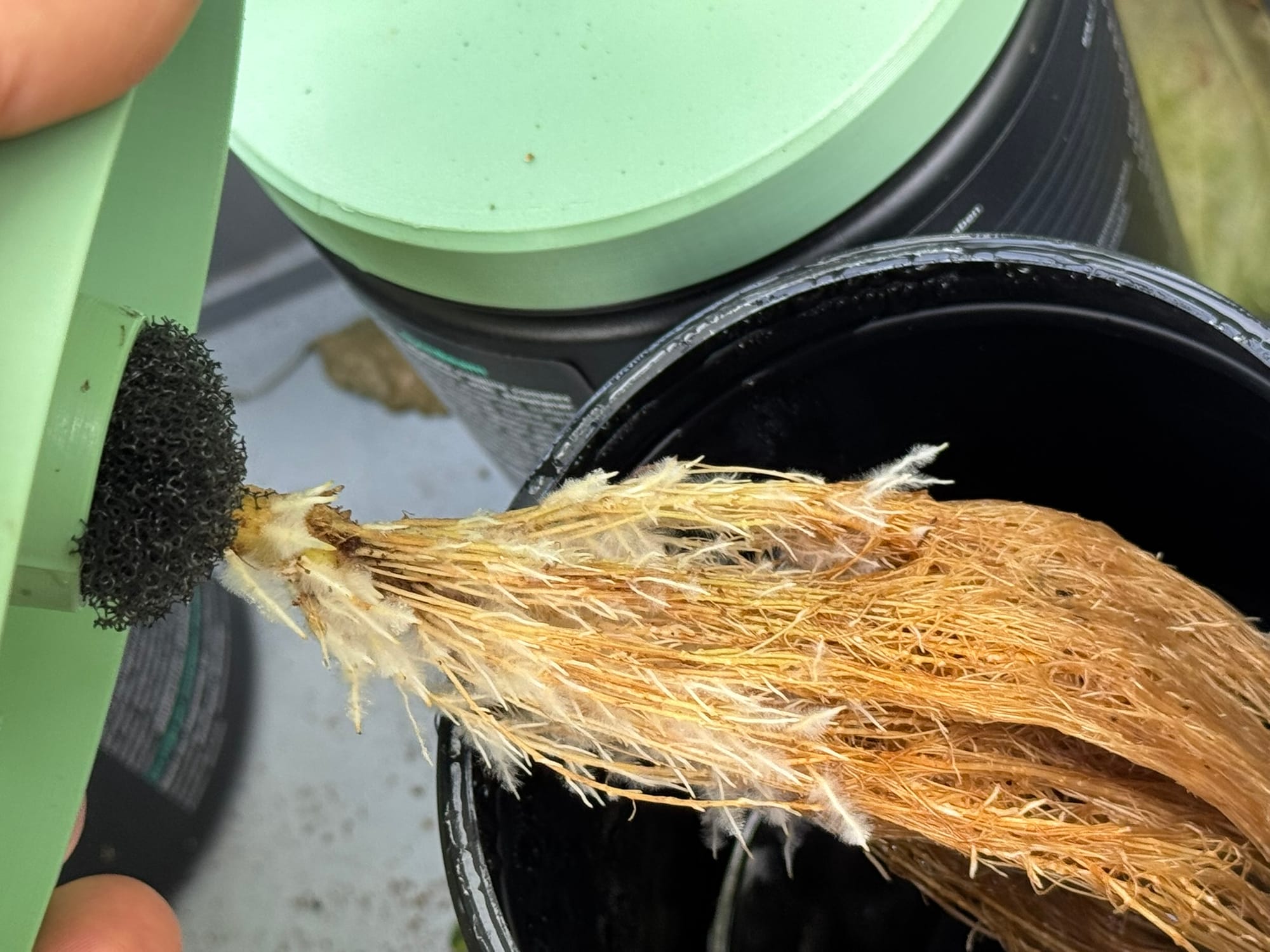
The Kratky experiment is finally producing air roots. So there is a chance for a good growth.
The already stressed-out bell peppers then had to contend with temperatures as low as 6 °C. And of course, they hate it. This is the temperature where everything slows down, including nutrient uptake, and they simply stop growing. But they are recovering slowly but steadily, and I still believe in a somewhat good harvest.
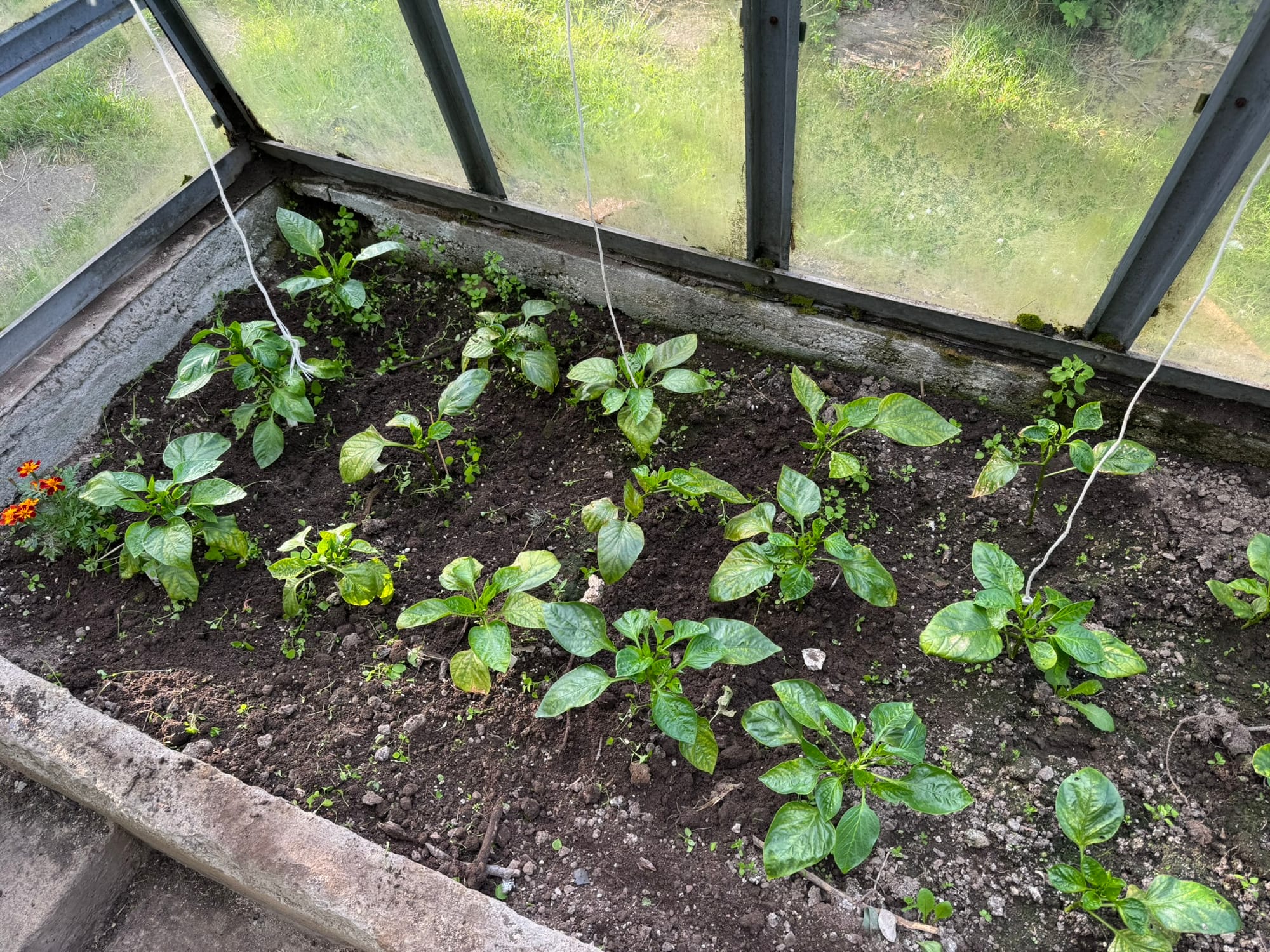
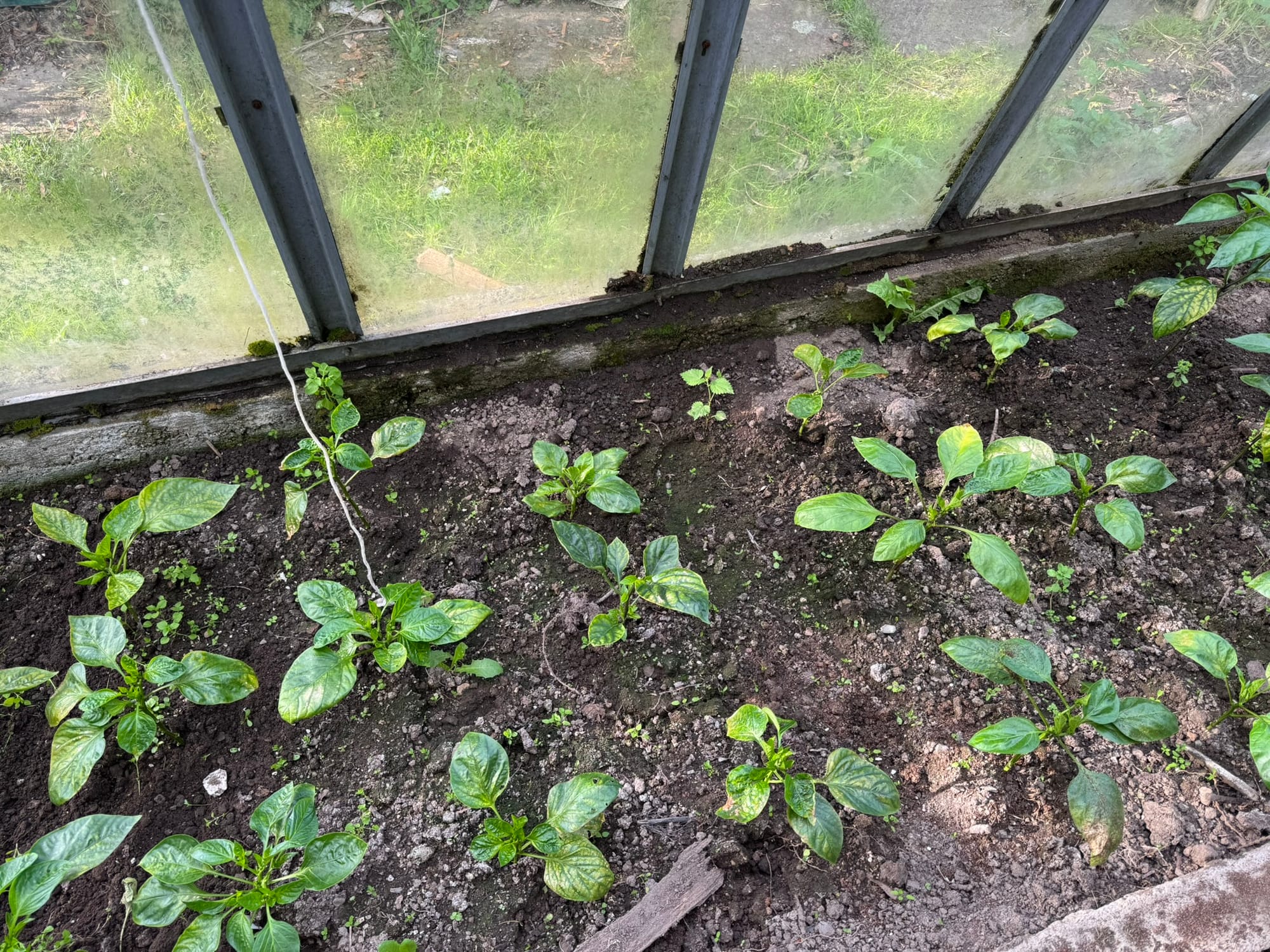
Habaneros and Jalapenos are much better at handling lower temperatures. There are still signs of mild nutrient deficiency, but not as much. Oh, and I decided to throw two Cayenne peppers into the mix, just for bread and circus.
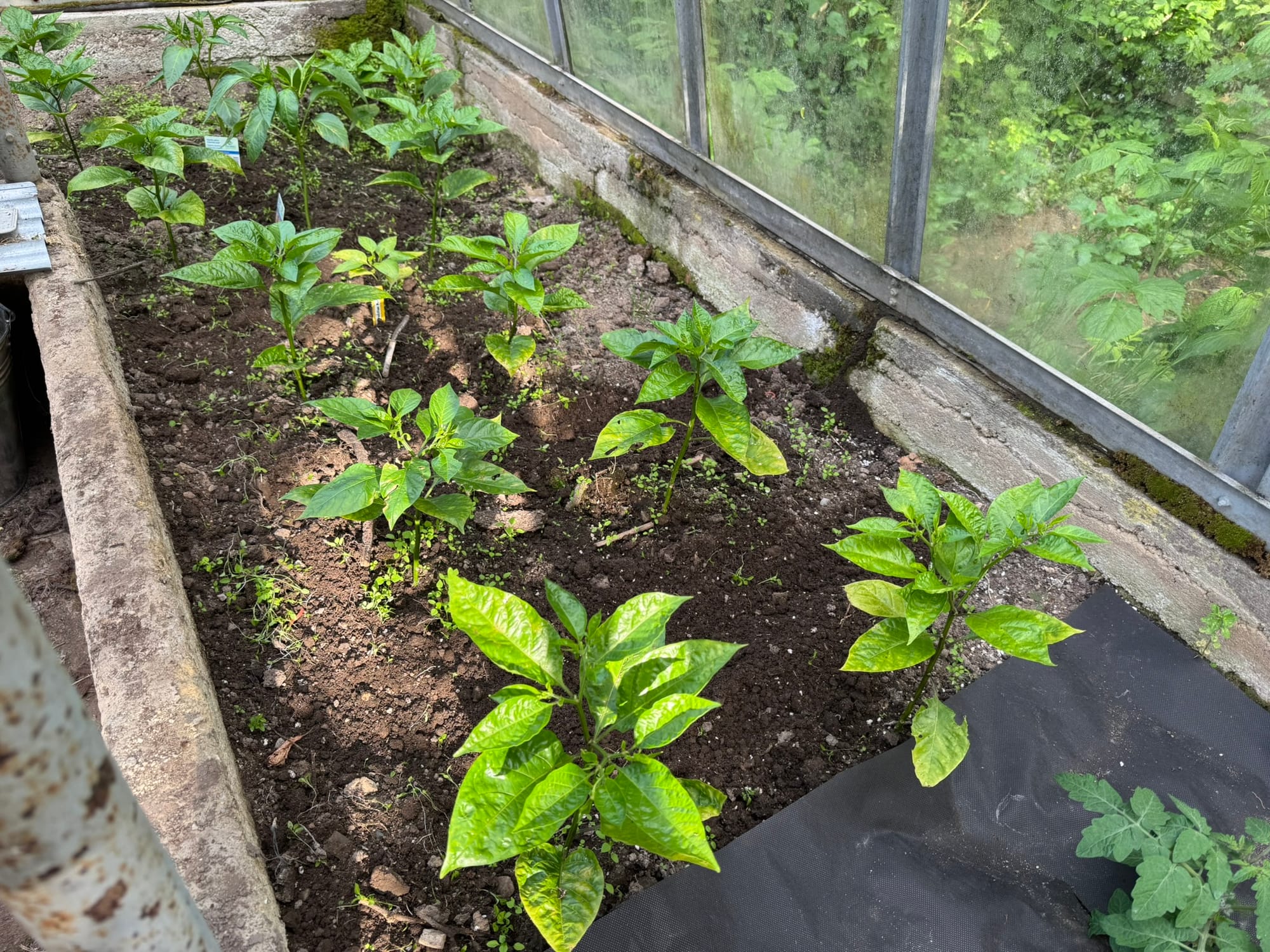

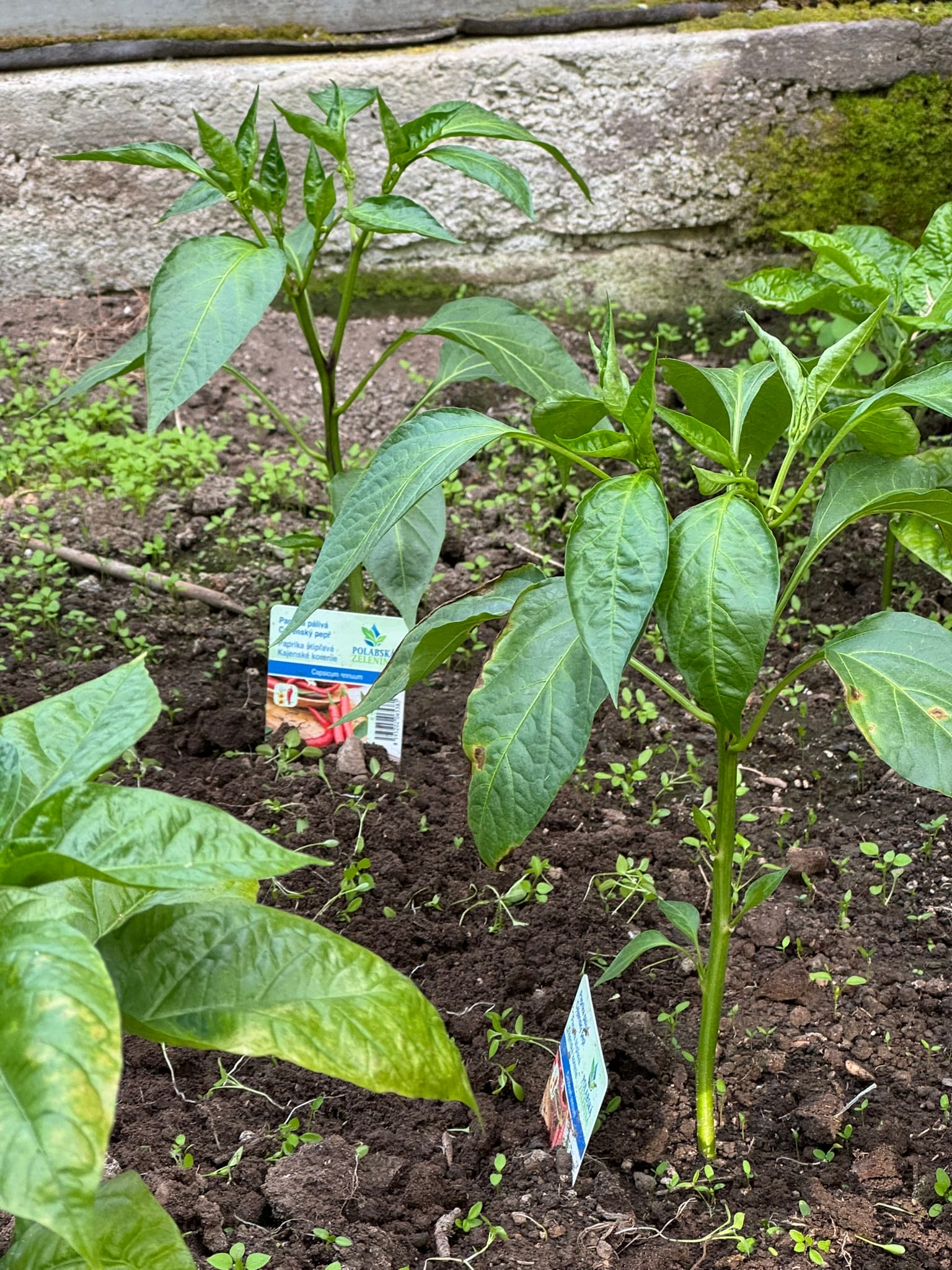
As mentioned last time, I plan to use the terracotta spike irrigation in the greenhouse again this year. But I had to try something first. I tried using the wicking pipe, extending the original to 2 meters. Initially, it worked, but I wasn’t happy with the performance. The greenhouse beds are much better at retaining water and moisture, and peppers hate constantly moist roots. The rate at which water was escaping the pipe was too high in some places and too low in others. It would probably work better in a smaller container, and I guess the capillary action with higher gravity drain is just too fast. Never mind. The spike it is. And I named it TerraClick. It’s available on my Printables profile.
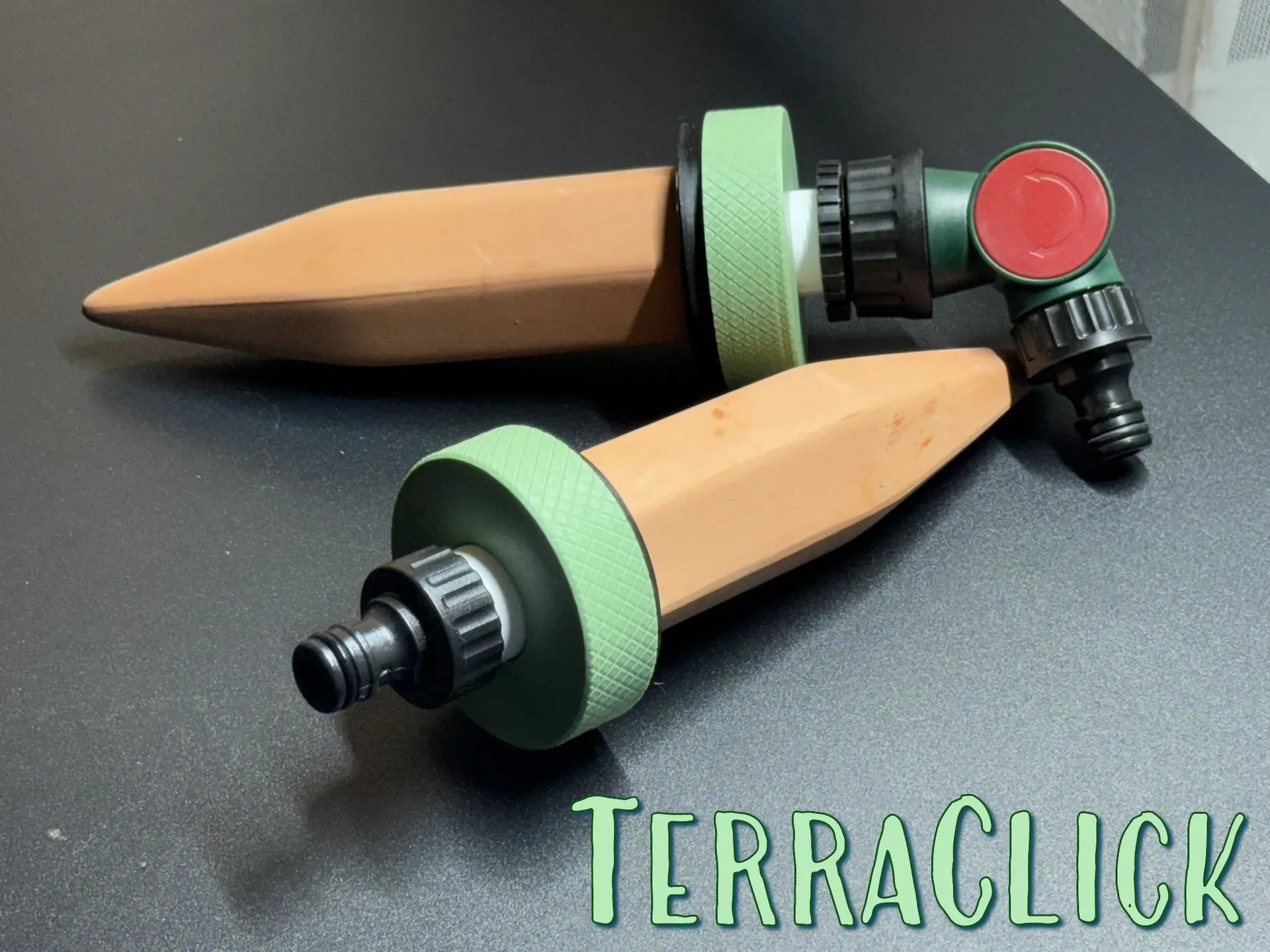
Still in the greenhouse, I was able to plant the Red Robin tomatoes. By mid-May, even though outside temperatures were still dipping to zero, the greenhouse stayed above freezing. For this reason, I moved all my tomatoes into the greenhouse because they were suffering in my apartment, and I planted the tiny Red Robin, which took off great as always. I saved some seeds from last year, as usual, so the plants should be used to the environment.
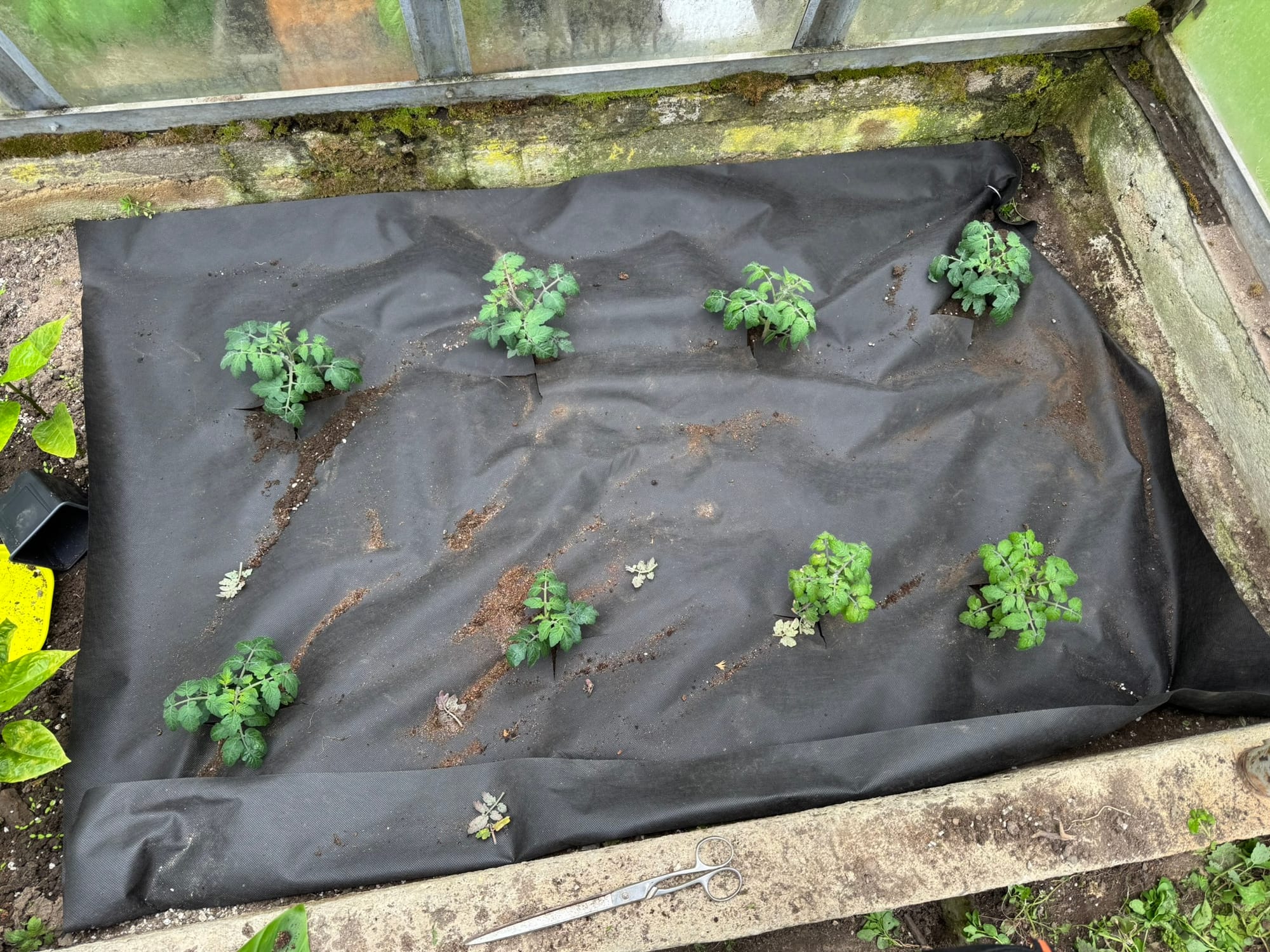
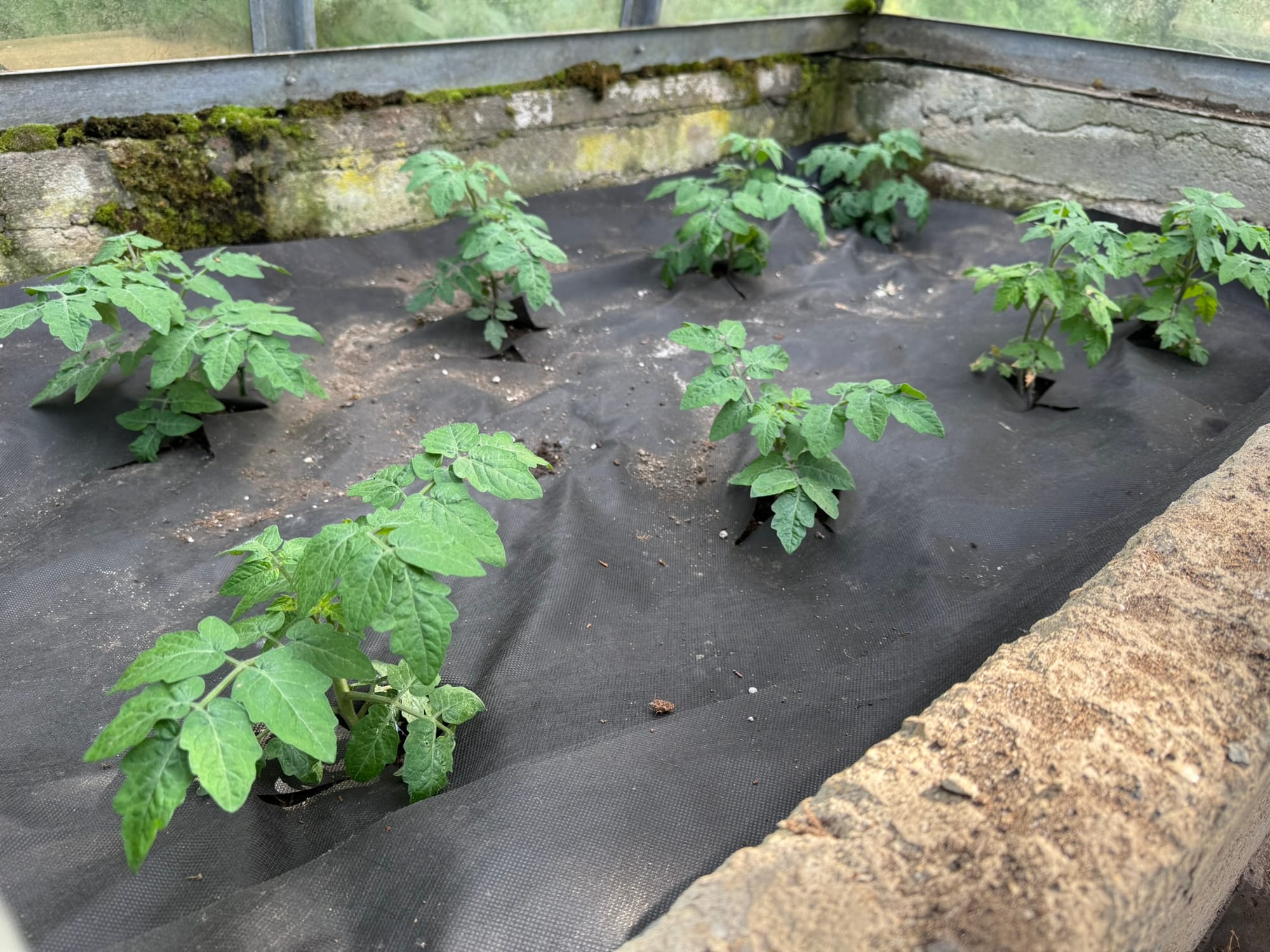
You might have noticed there is very little space left in my greenhouse. And something is missing. I’ve decided to grow salad cucumbers a little differently this year. For the past couple of years, the summer heat pushed the temperature in my greenhouse sky high. And even though cucumbers are like little melons and love heat and moisture, temperatures above 35°C harm them. They become sterile, young fruits fall, and mature fruits get disfigured. And I want to have pretty cucumbers. At least once. So I decided to move the cucumber station outside. I made some room by moving old wood and bought a cheap greenhouse that fits the space perfectly. I figured it would be easier to control the climate in something like this, where I can just remove the front wall and suddenly all cucumbers are chilling outside while still getting protection during breezy June nights. I’ll probably fit a small fan there somewhere.

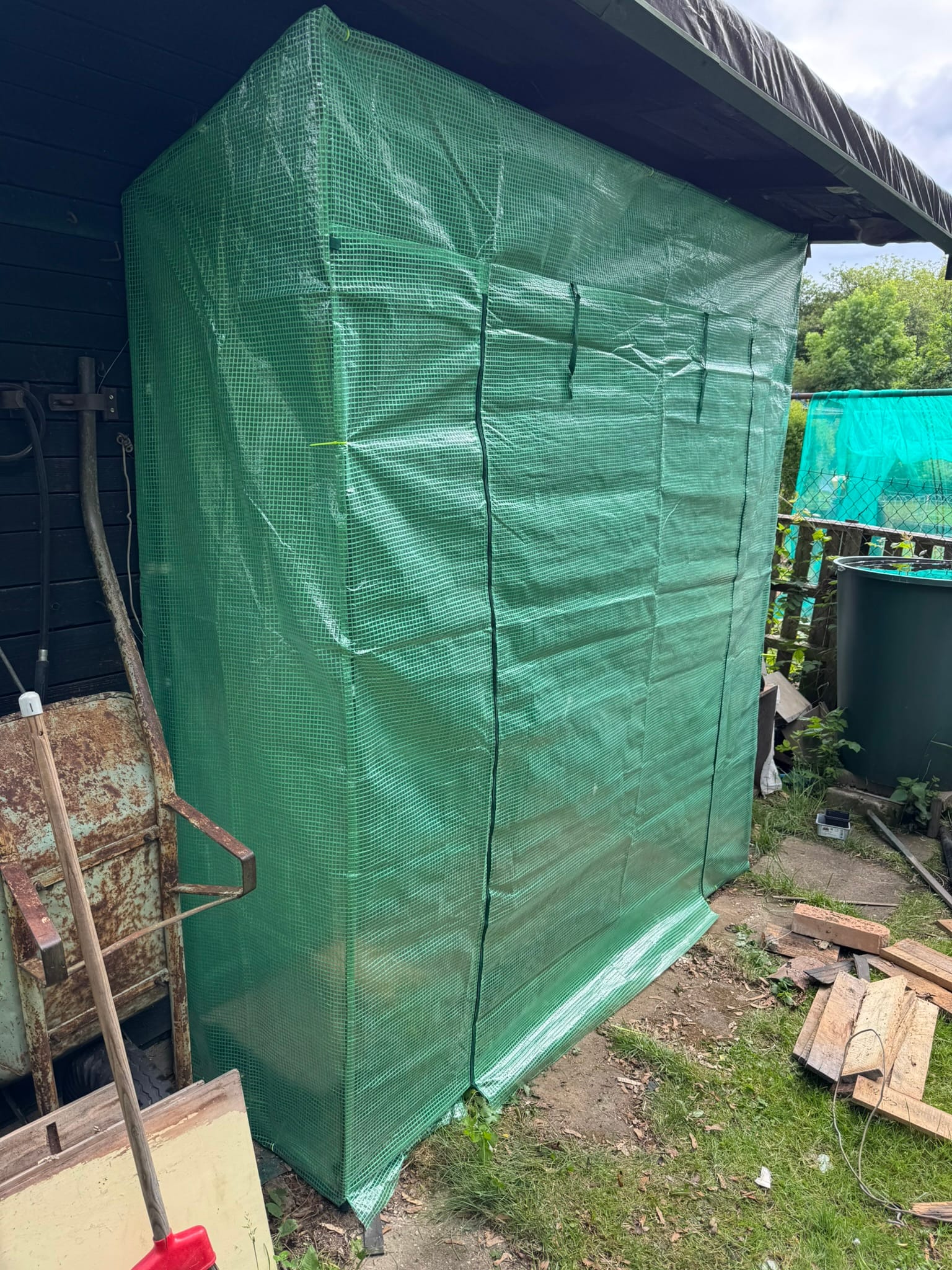
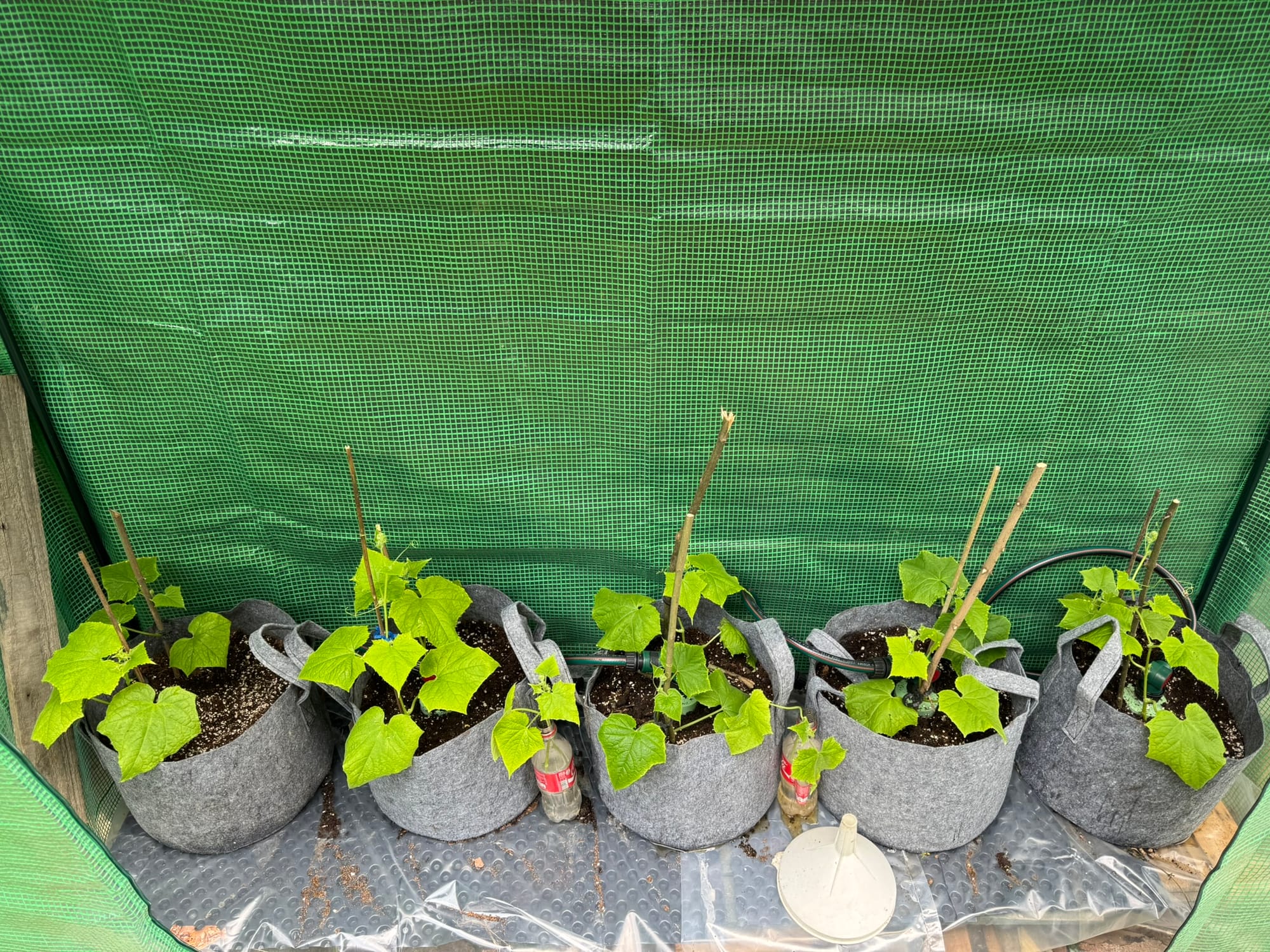
the chilling situation
It’s been chilly outside. No doubt about that. Thankfully, this year I’m growing plenty of things that thrive in this kind of chill. I had a record-breaking harvest of radishes. Seriously, this is the year of radish. Huge, crispy, spicy, and as a bonus, you can plant them all year round. You just have to pick the right variety.
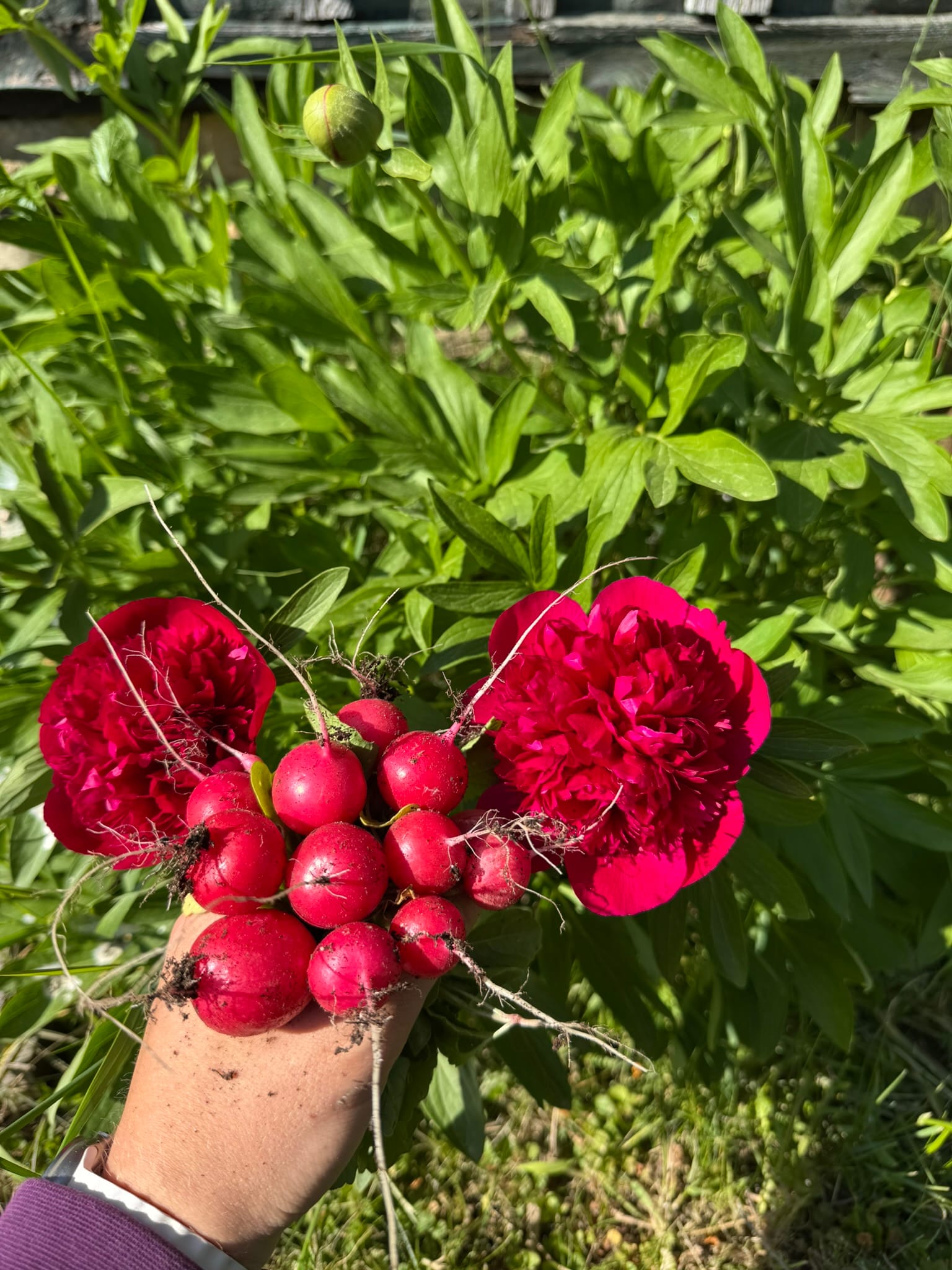
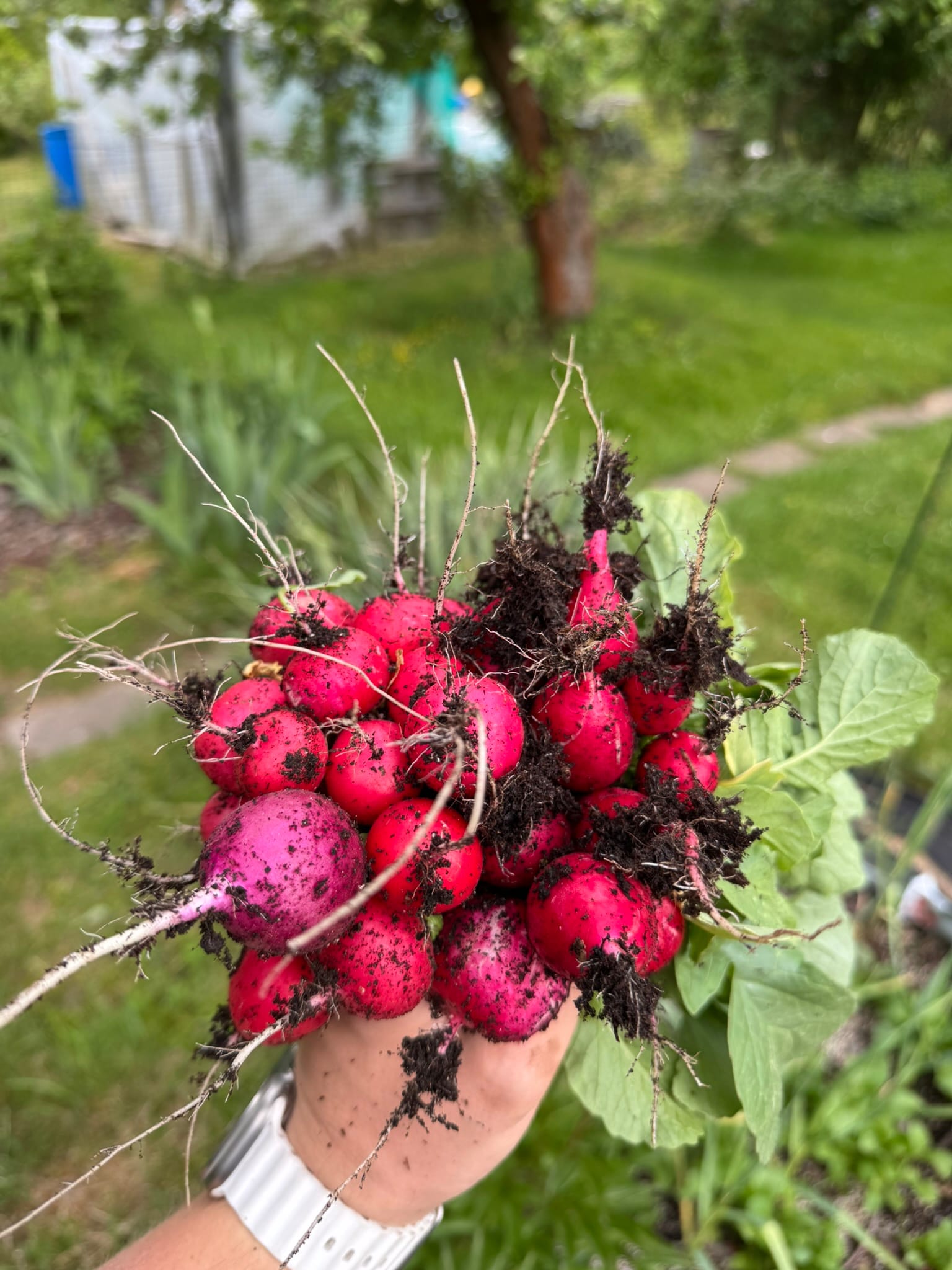
Other crops like the chill, too. Salads and peas, for example. I’ve obtained another set of salads that went straight between a line of radishes and the Parmex carrot, which is doing great, by the way. I’ve been pricking out some weak seedlings to make sure the carrots have all the space they need to produce large bulbs.
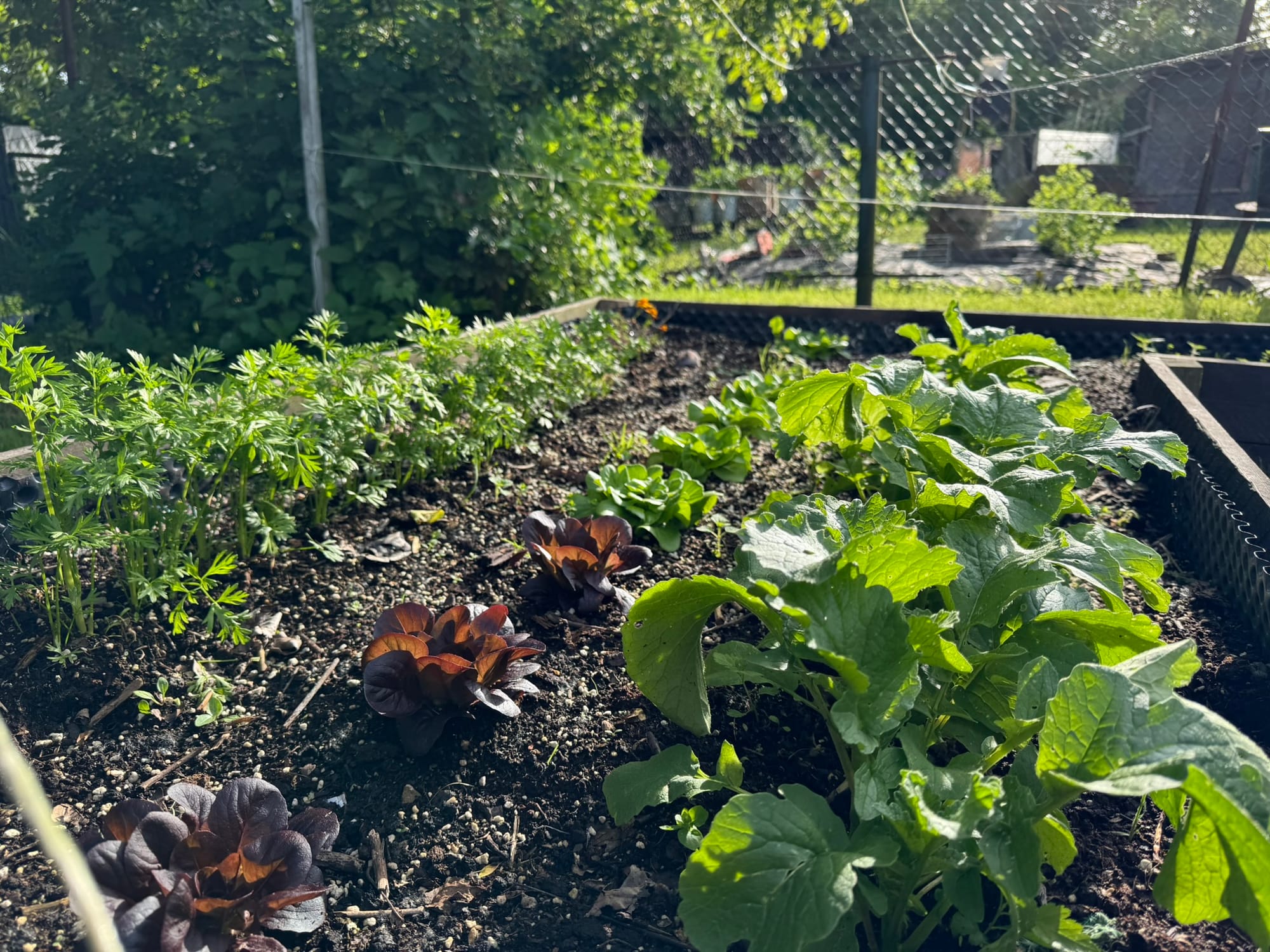
The squash beds, dedicated to winter squash and corn, are currently occupied by radishes and kohlrabi, and they’re producing too. The radishes are very sad-looking and not particularly tasty, as expected from ribbon seed, but the kohlrabi is great. I’ve finally been able to harvest some, and in two weeks, all of them will be gone, just in time for the winter squash.
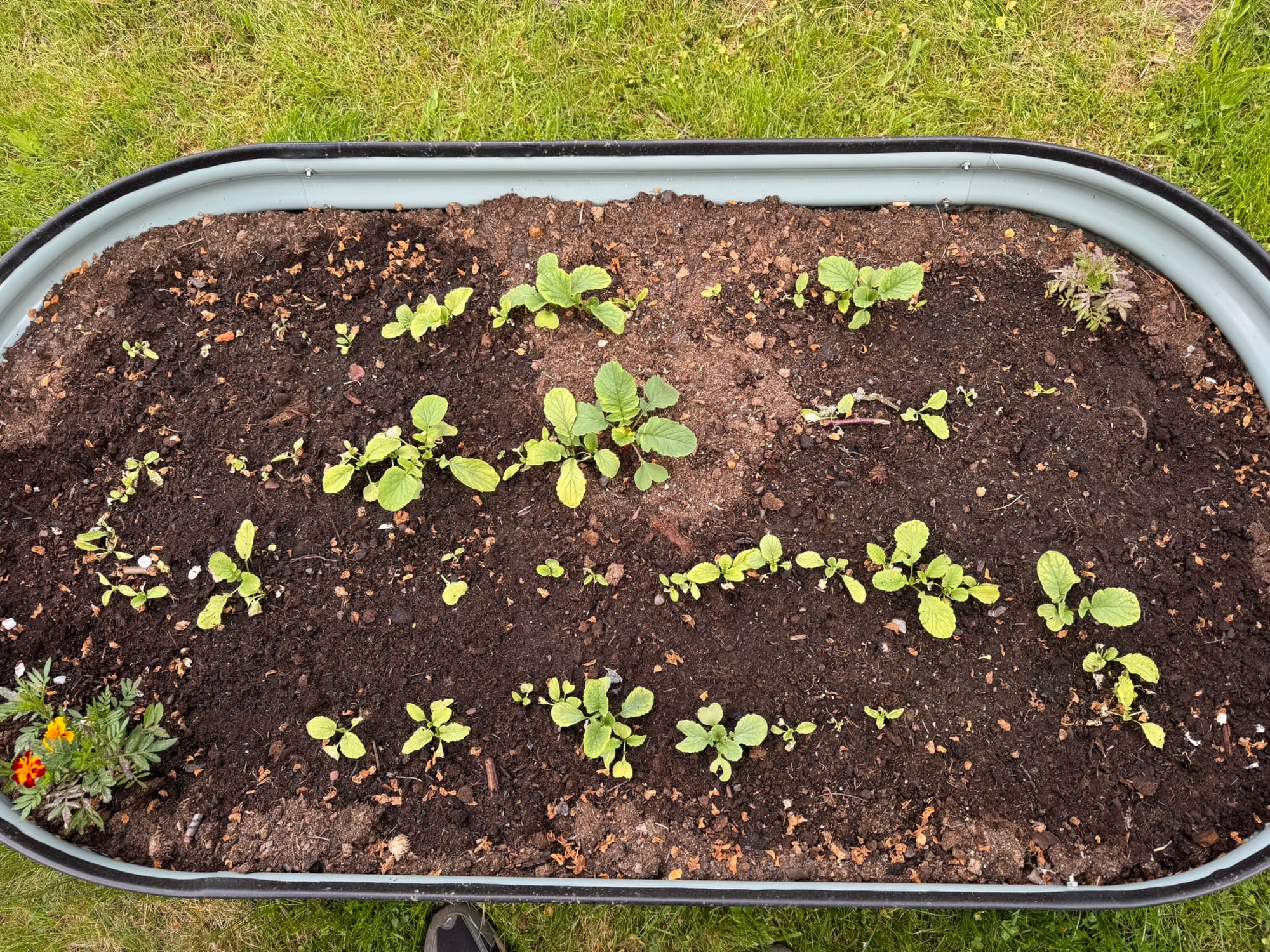
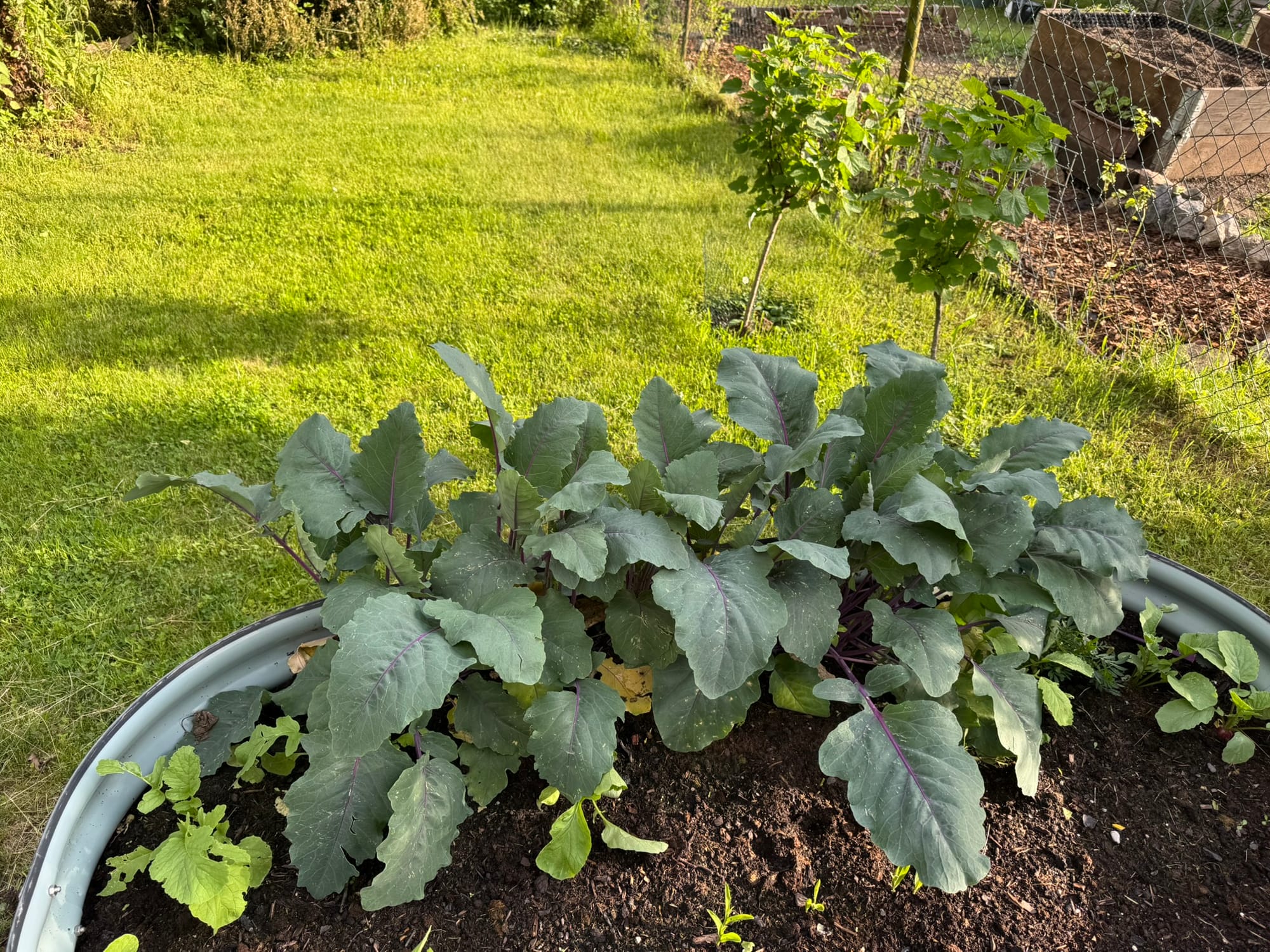
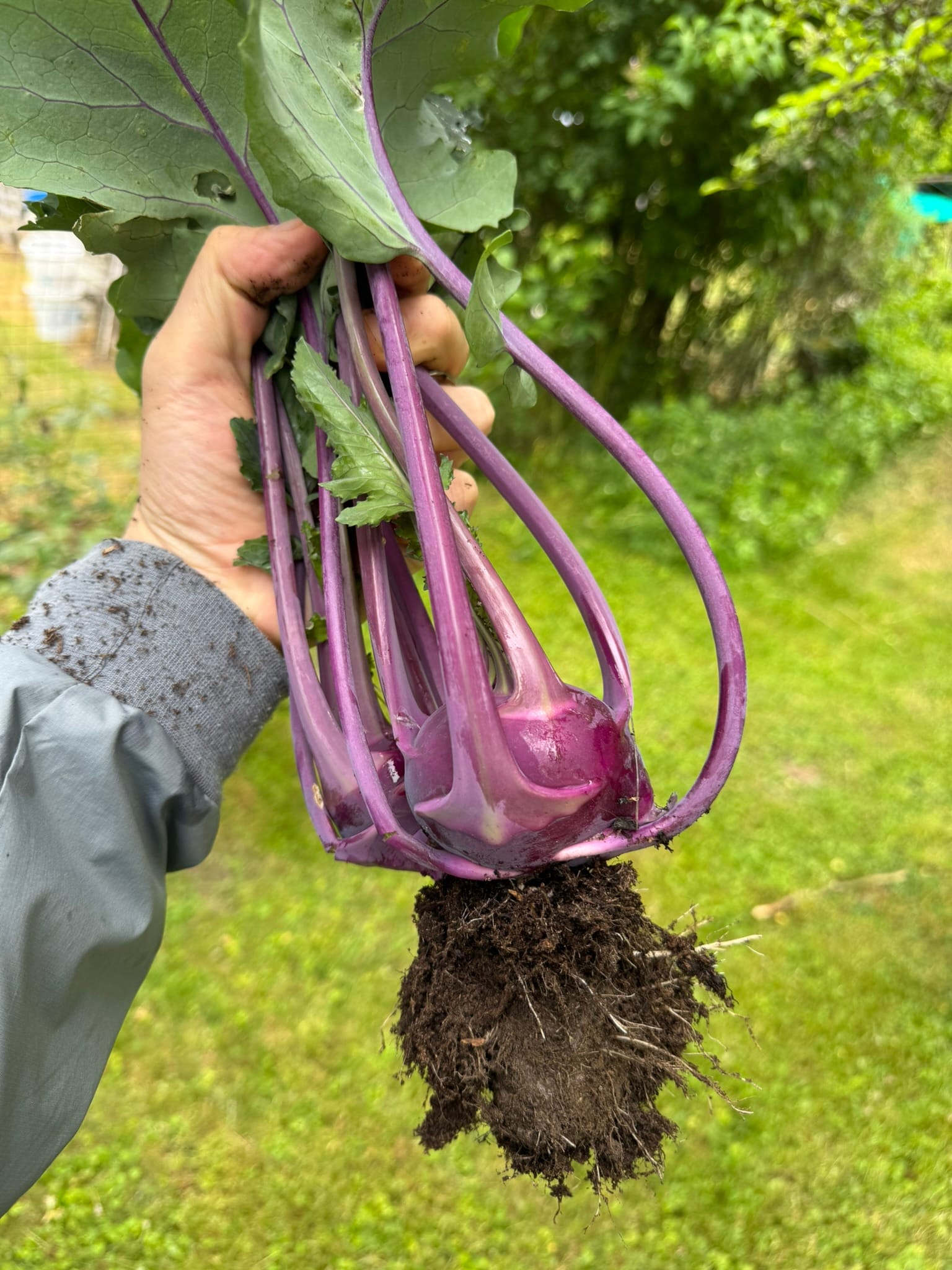

By the way, my corn is growing. I planted seeds in the center of both beds, hoping they’ll support each other during windy weather at least as well as anonymous alcoholics do in group therapy.
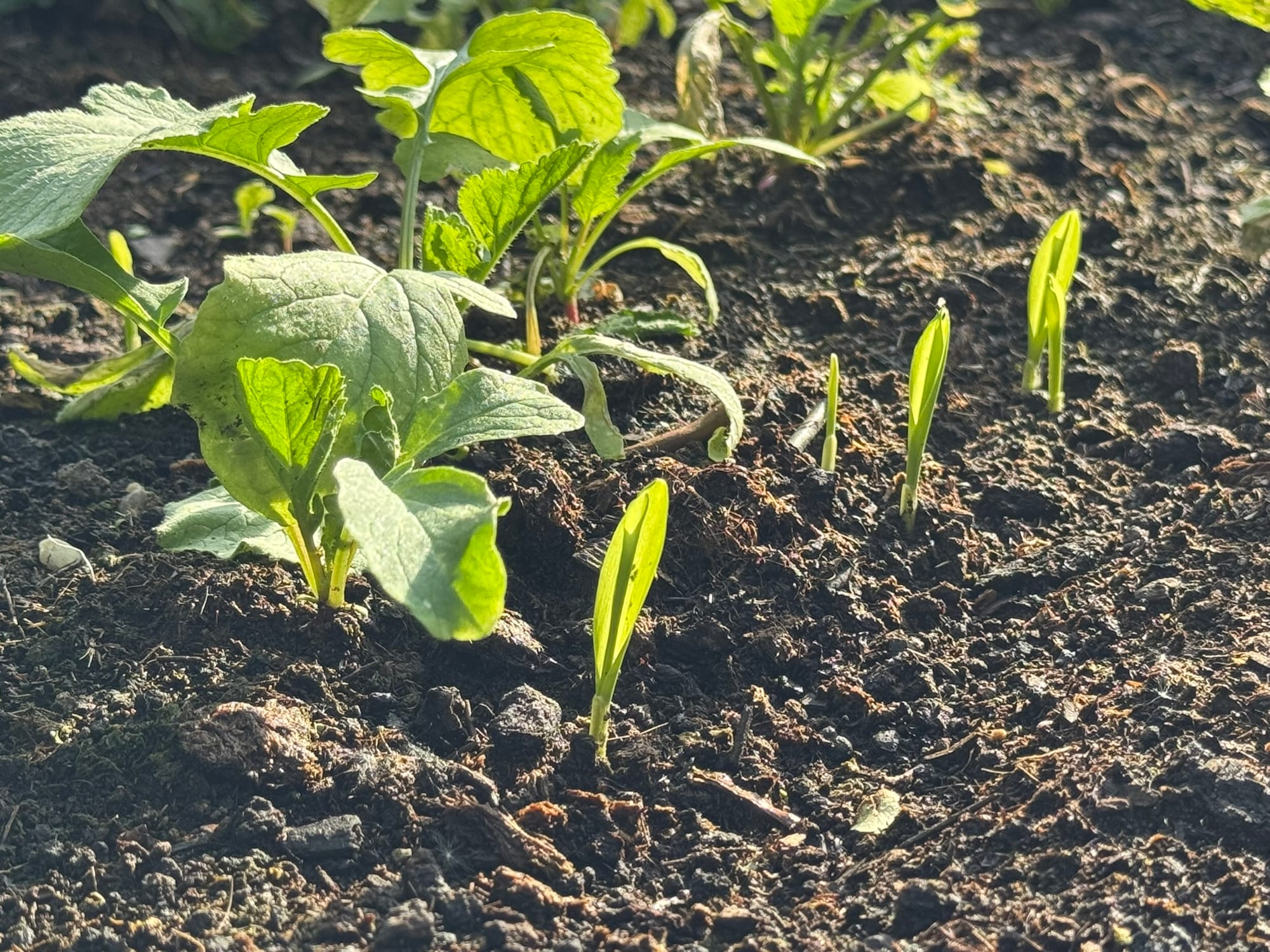

At the end of May, I was finally able to move my tomatoes outside. And I have outdone myself with the sheer number of plants. This year, it’s 18 hydroponically grown tomatoes and 24 soil-grown. And I’m only talking about the indeterminate ones. Including the Micro-Toms and Red Robins, I’d have to add 14 more.
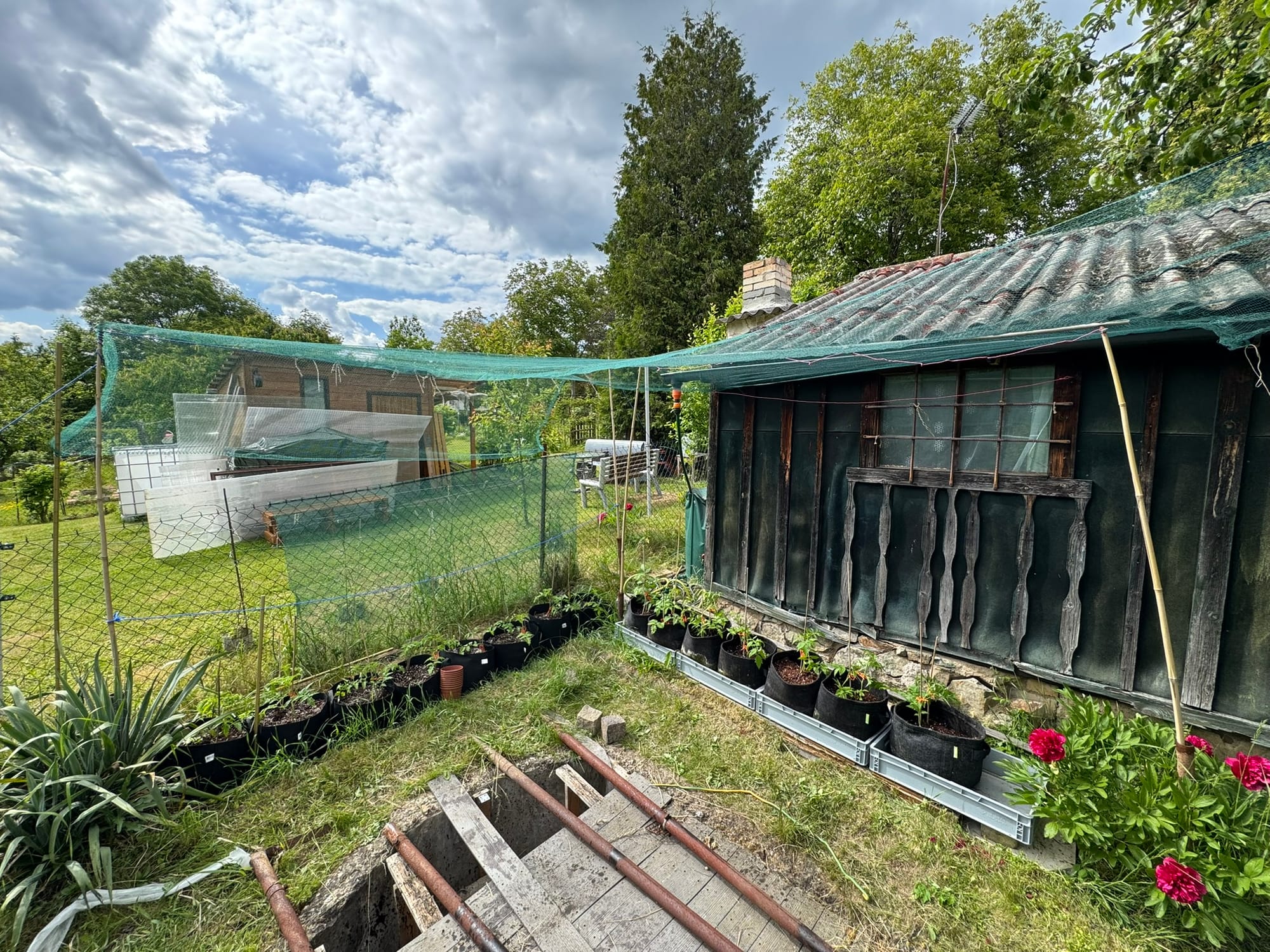
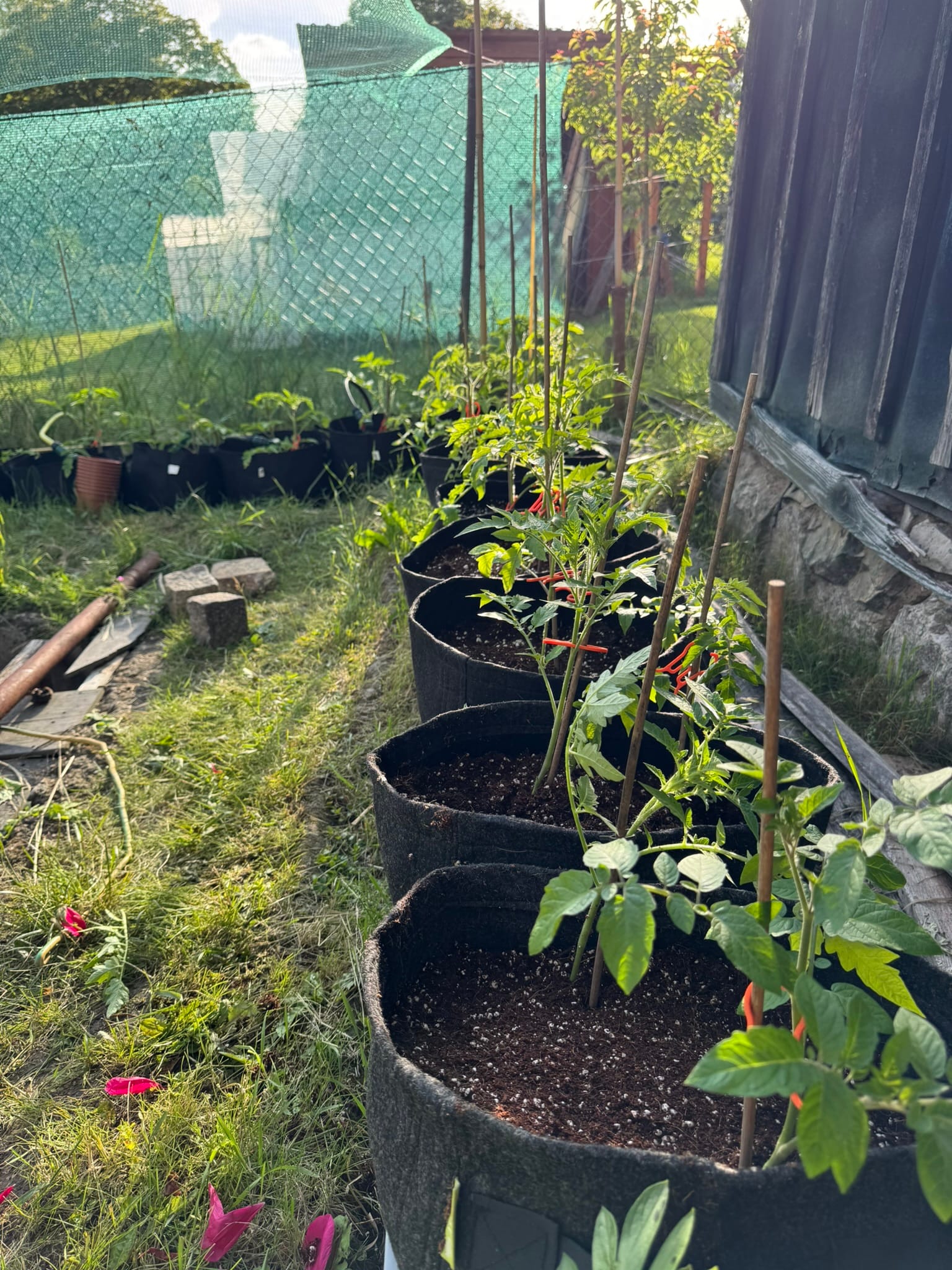
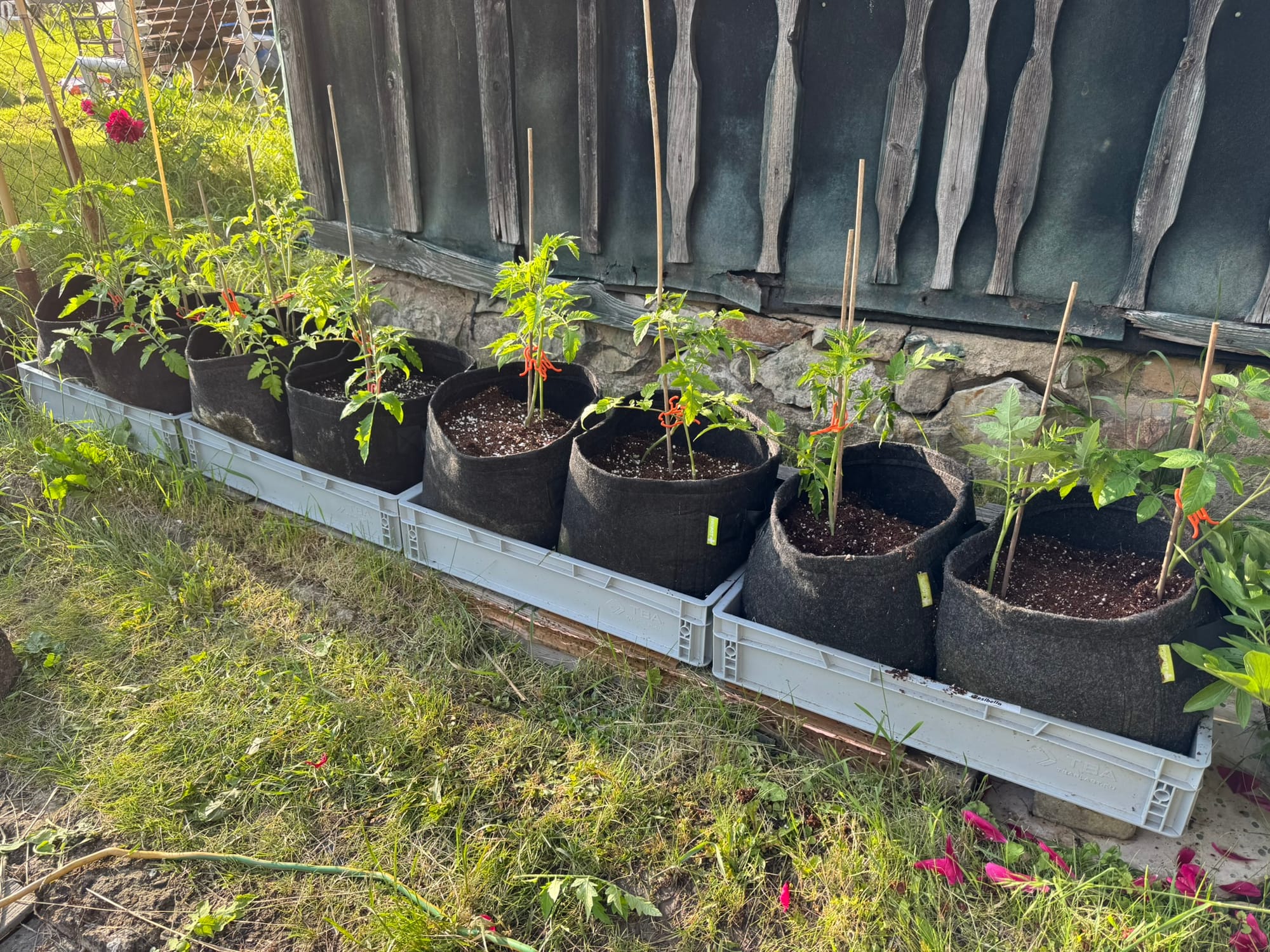
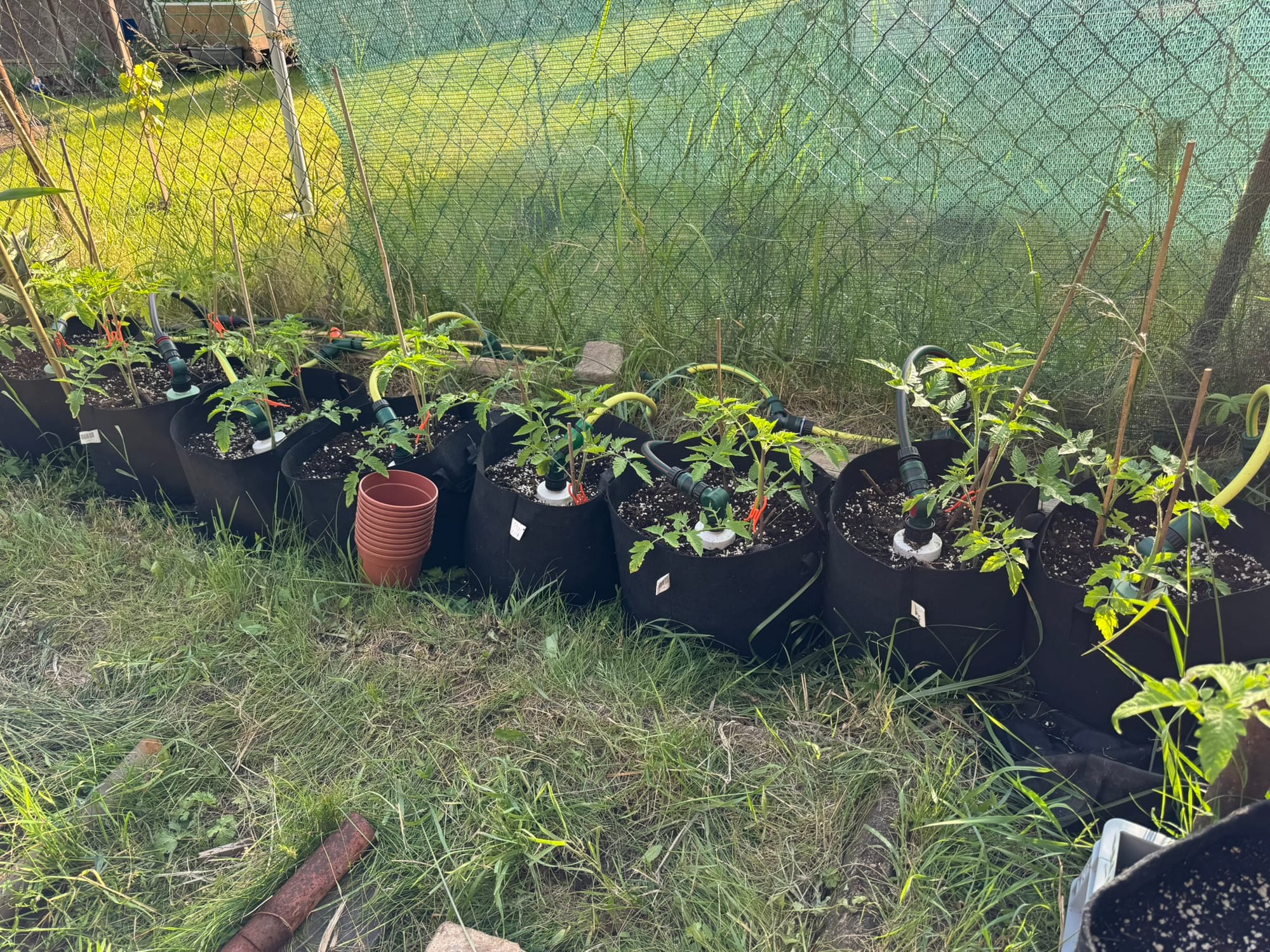
The soil mix I use for growing them is the standard 40:30:30 mix of compost, peat, and perlite. This year I added a shitton of magnesium and calcium to avoid last year’s incident with blossom end rot. Not this year. And of course, most of them are connected to a rain barrel with the TerraClick.
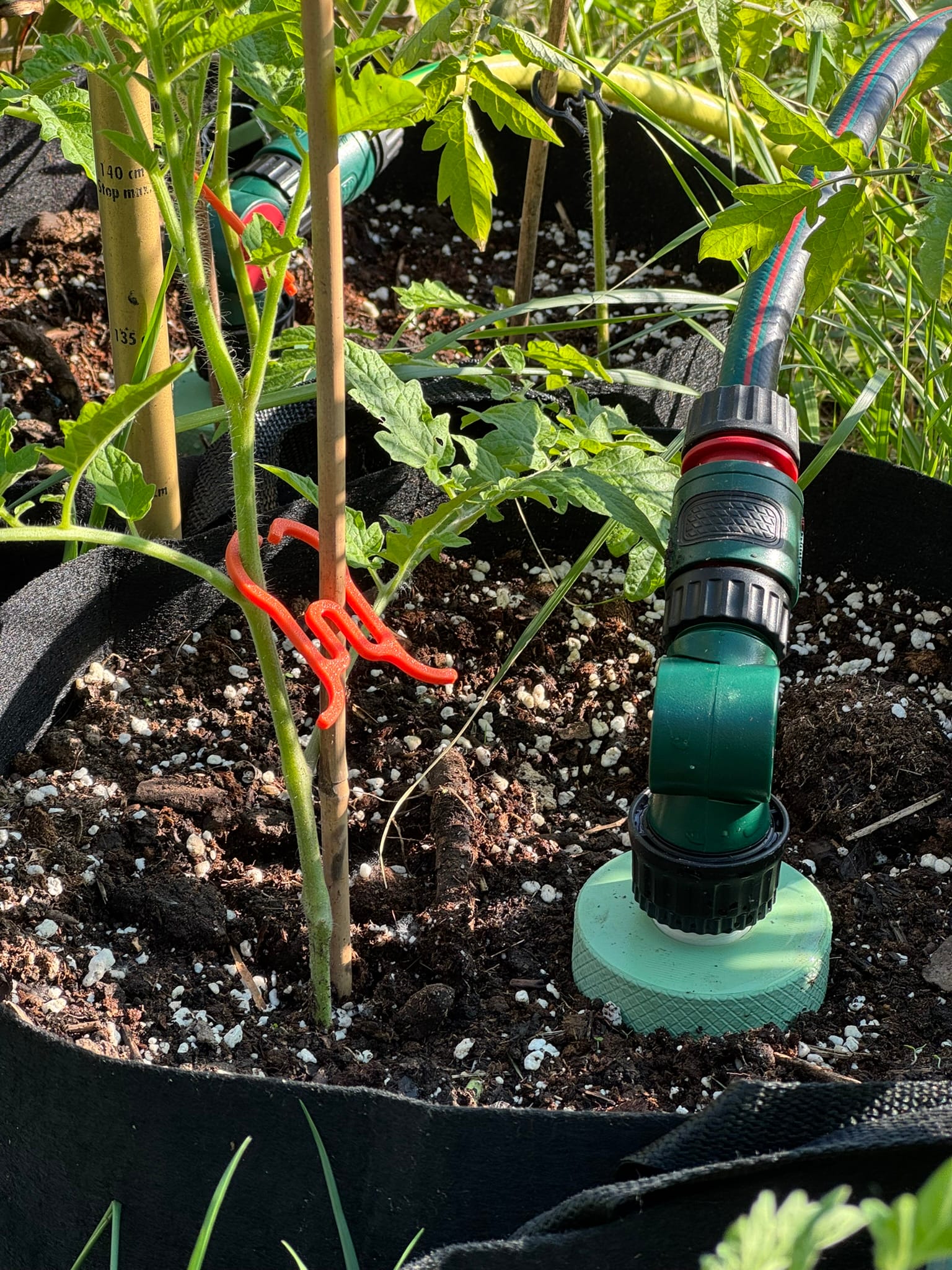
And to finish the update with the already mentioned Micro-Toms, they replaced the pea experiment in my windowsill greenhouse. These plants were actually the first ones to be moved outside, and I hope they’ll do better than last year, where I neglected, killed, or just mismanaged a few of them.
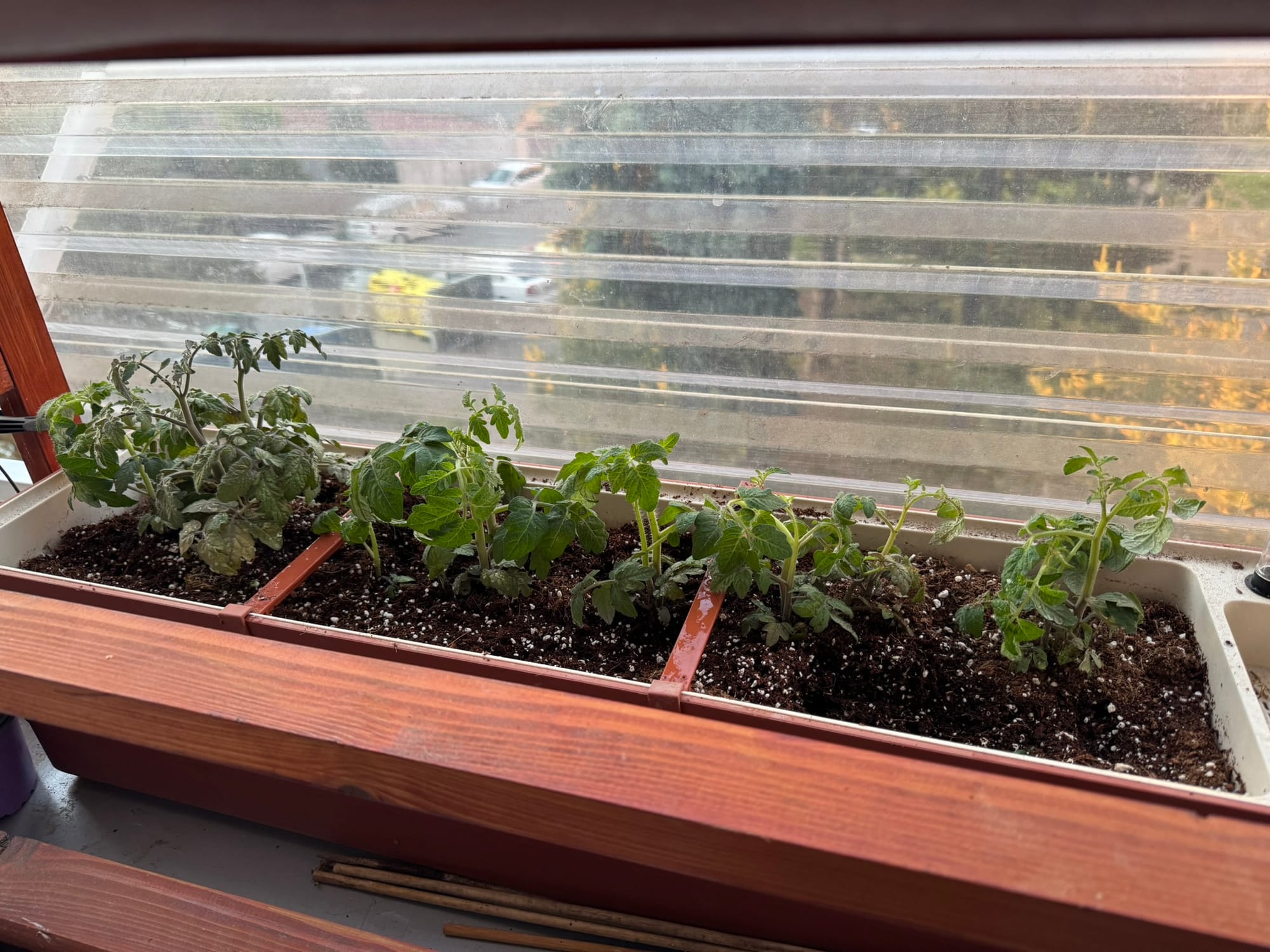
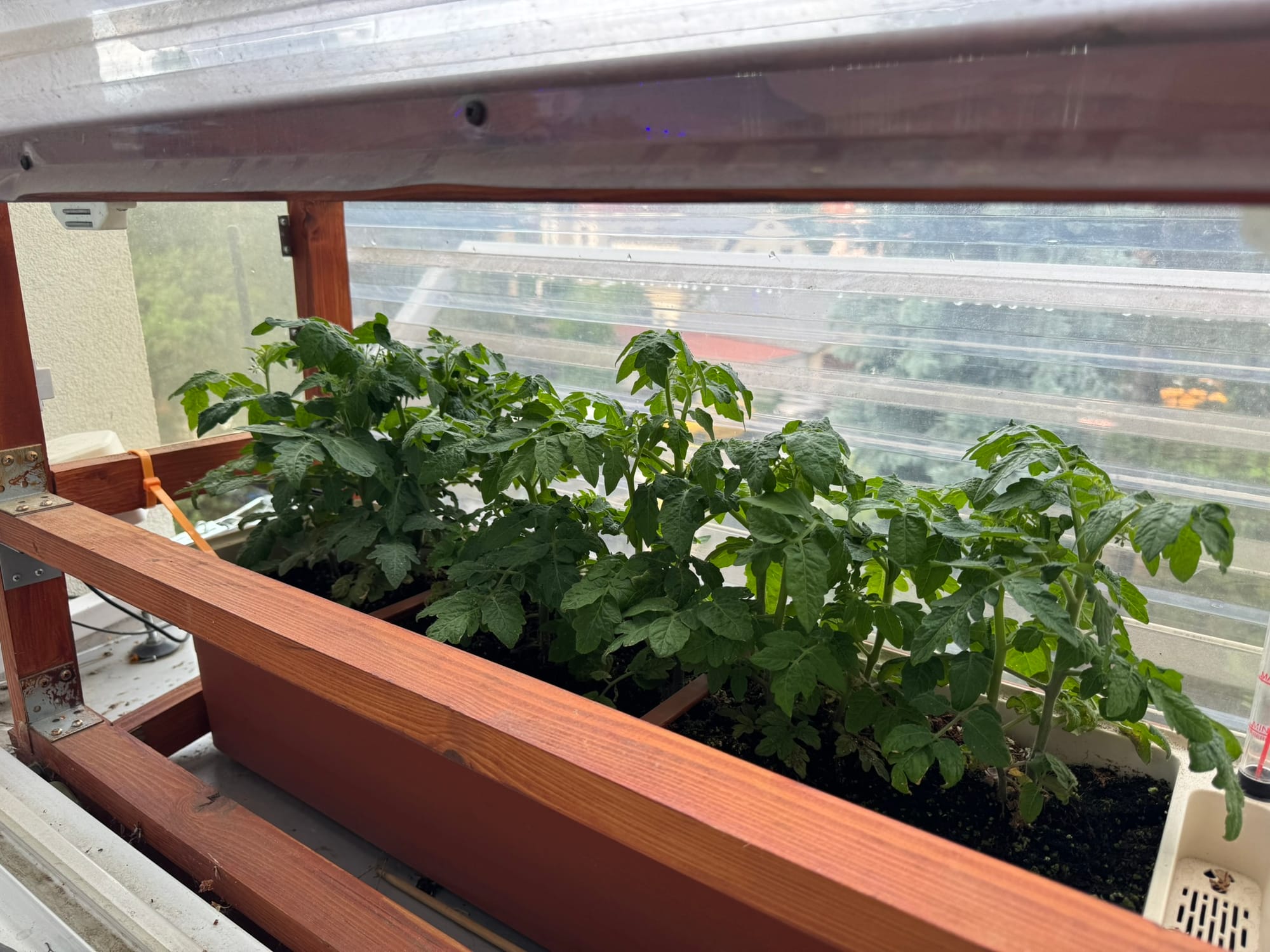
My poor baby potatoes! How are they? Absolutely fine. More than fine. They fucking love the soil and the spot I put them in. It’s an old corn and tomato spot. They have a shitton of sun and moisture. When mowing the grass, I usually top the bag with fresh cuttings. This not only helps retain moisture as mulch but also releases moisture on its own. I haven’t been watering them at all. And they are thriving in the soil mix I prepared for them. It’s very similar to my tomato mix but with less perlite.
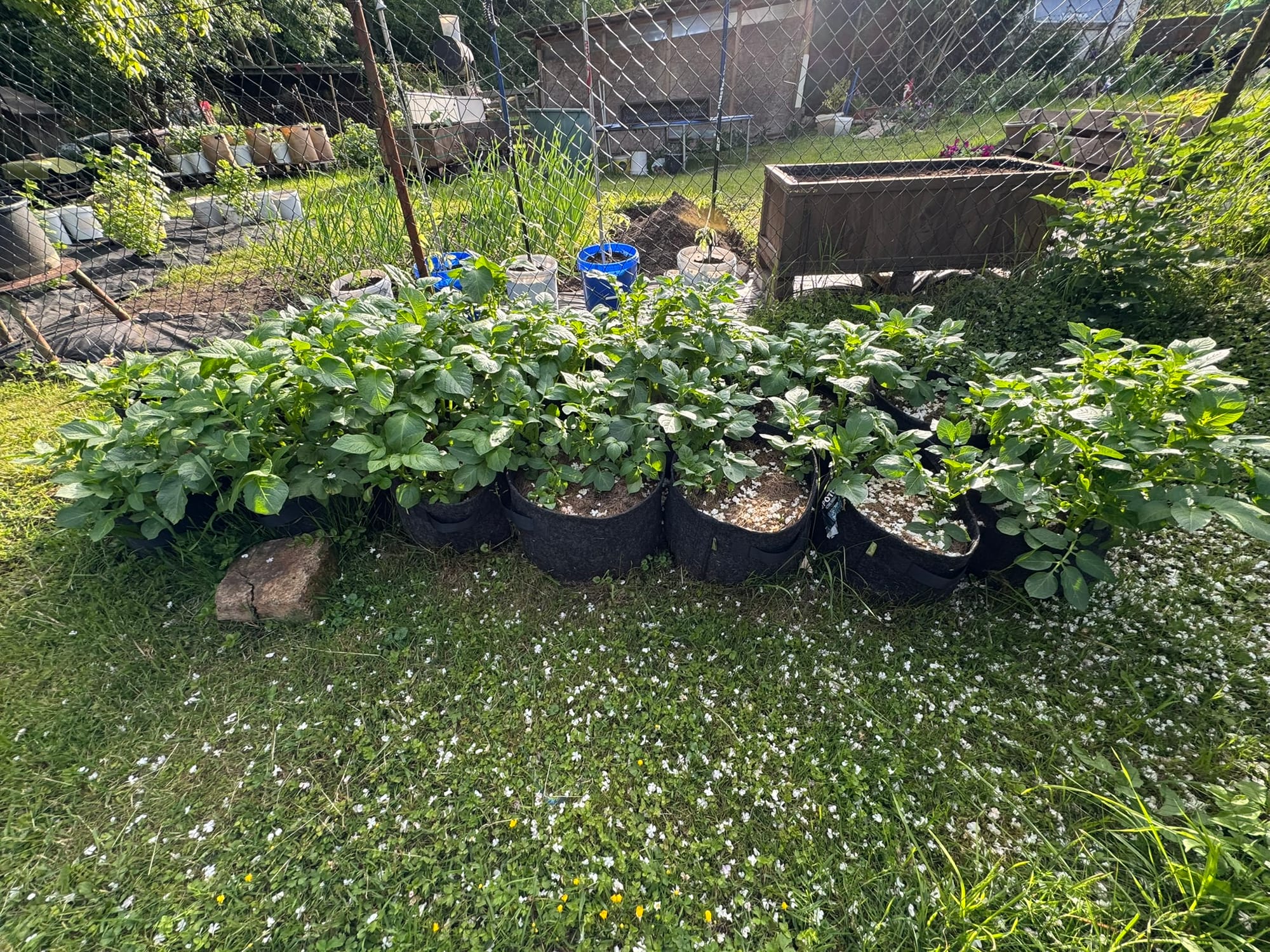
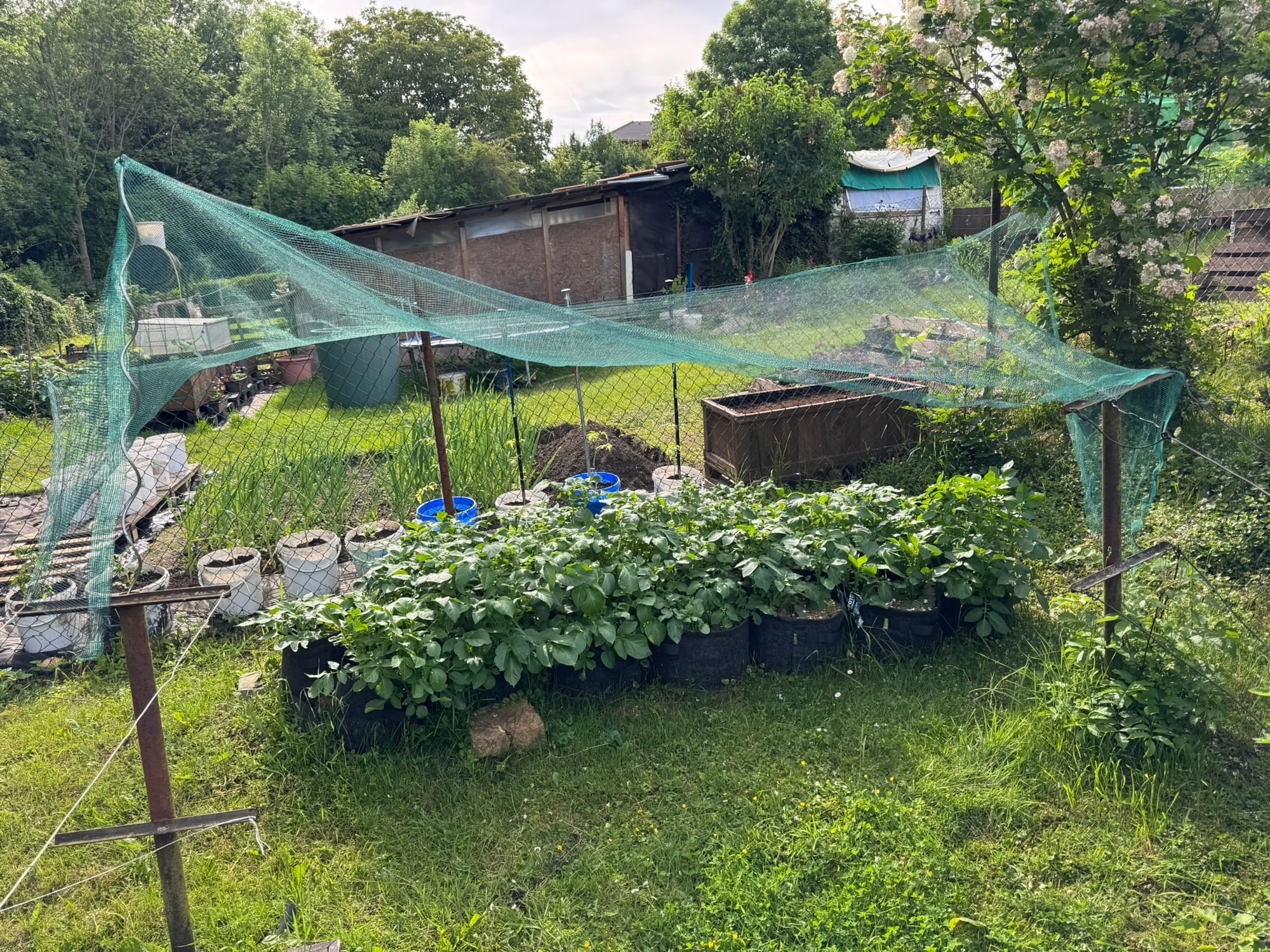
Hail netting already in place.
I’m even surprised how quickly the experimental potatoes grown just under grass clippings jumped out of the ground. It’s worth mentioning I’m not fertilizing them, and I cover them heavily with grass clippings. It’s a miracle they’re alive.
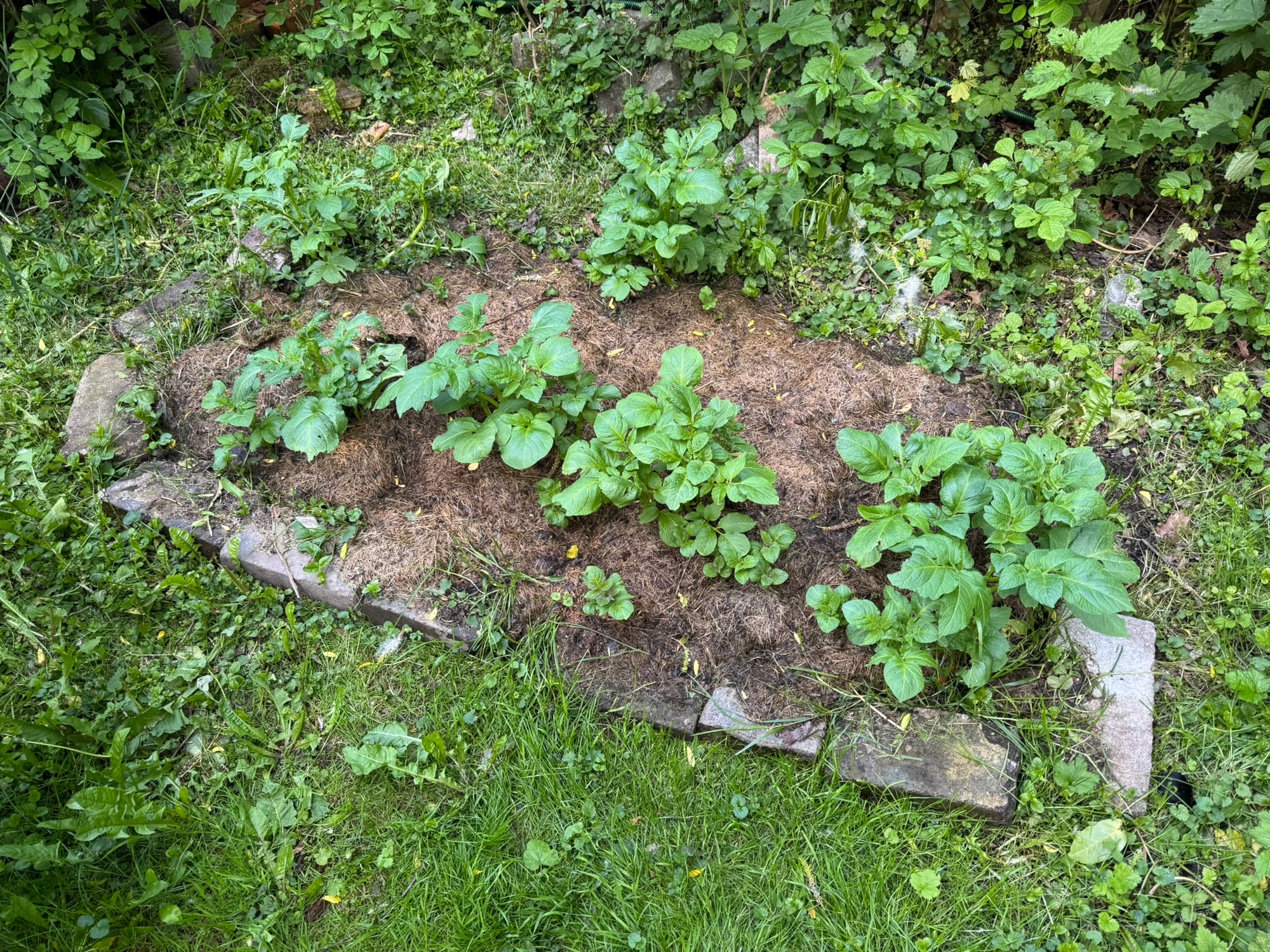
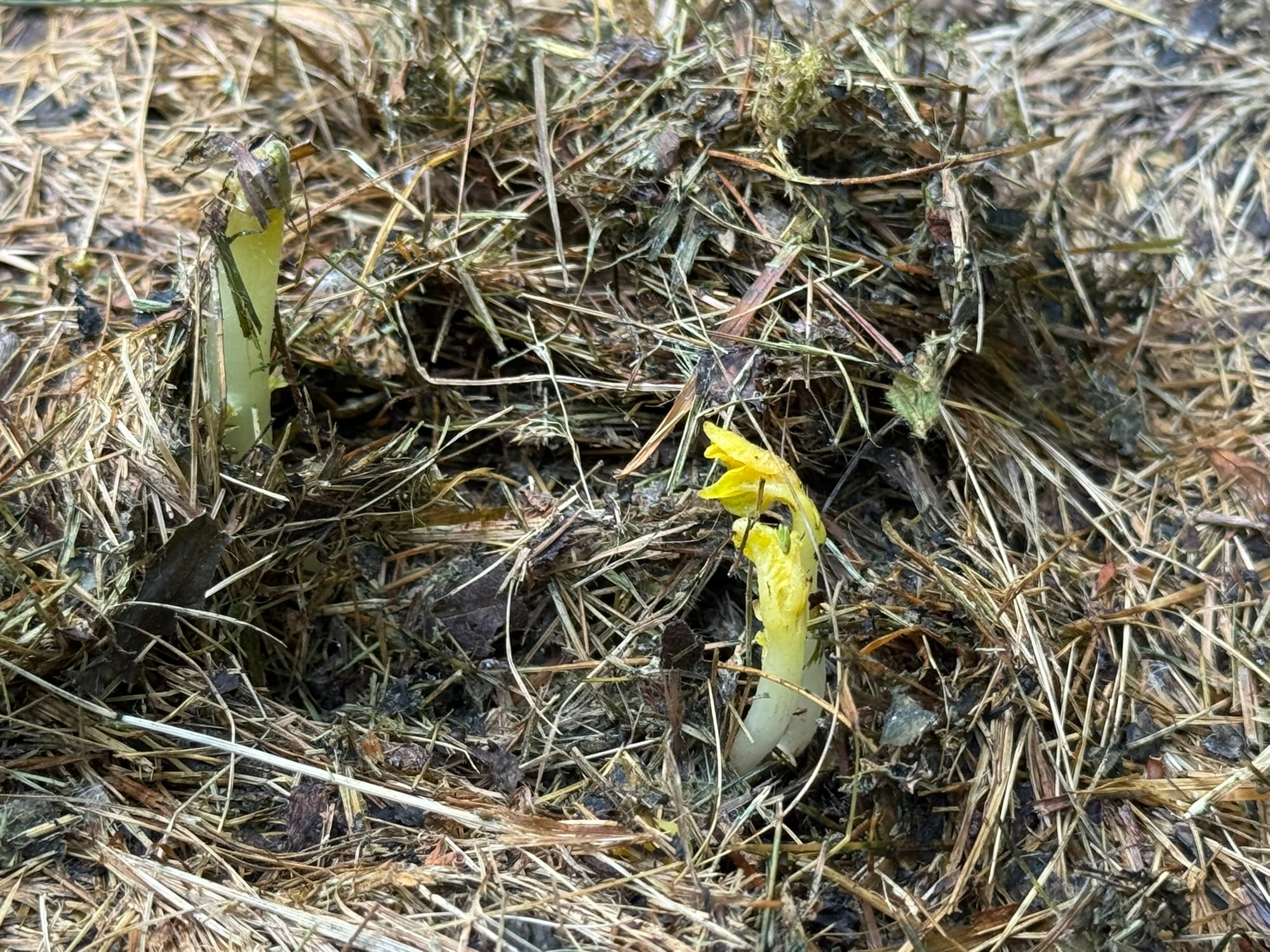
the alliums
The bulbous beds are thriving as well. They generally don’t care about the weather as long as it’s not freezing cold. The pattern of the garlic is especially mesmerizing, and I’m really happy that every single clove has sprouted.
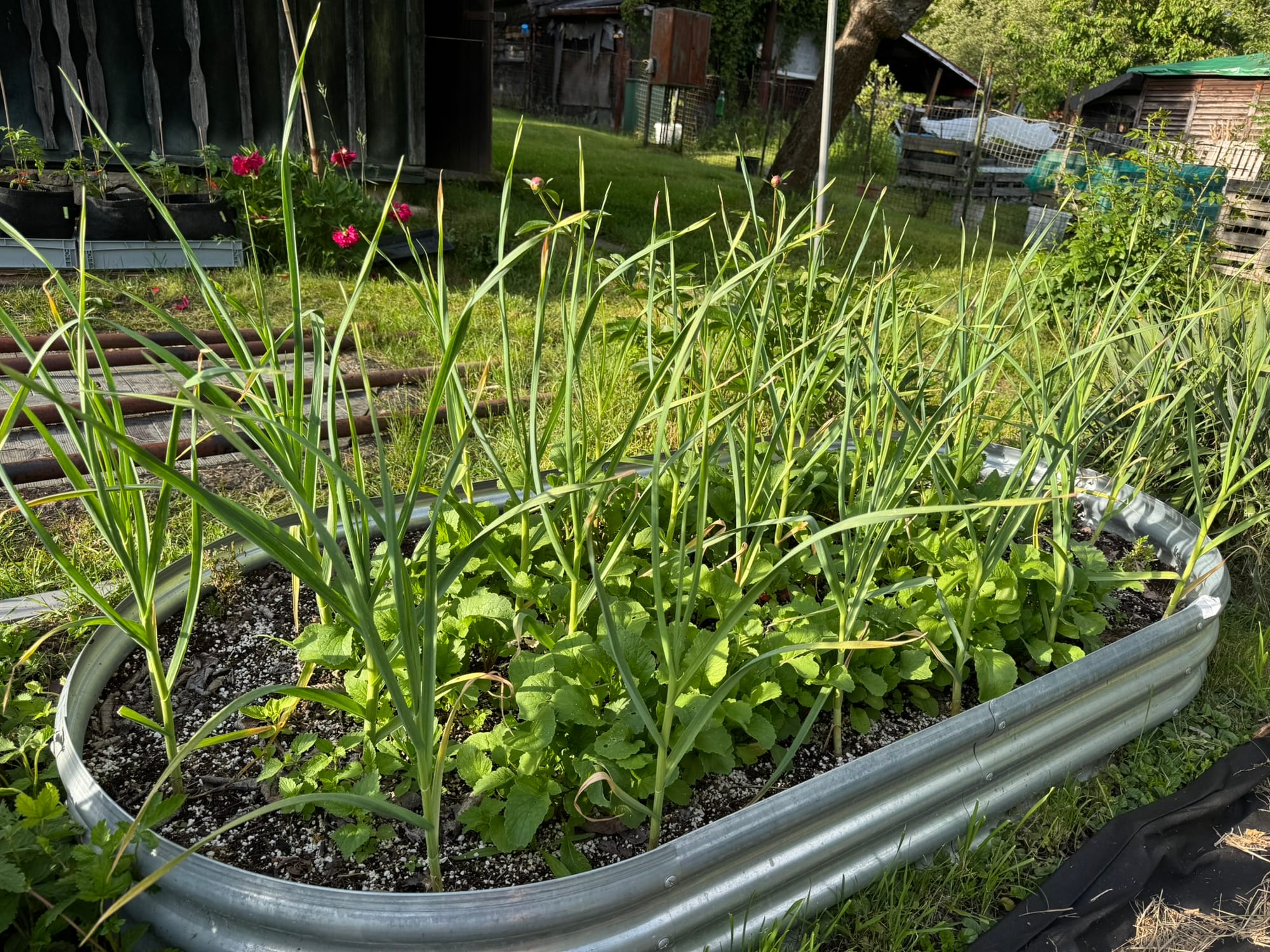
The onions are also looking great. No signs of stress or pests, and the carrots I sowed last month have sprouted in very nice, tiny lines. But I still have problems with the mysterious mushroom infestation. It’s probably not affecting the onions, though.
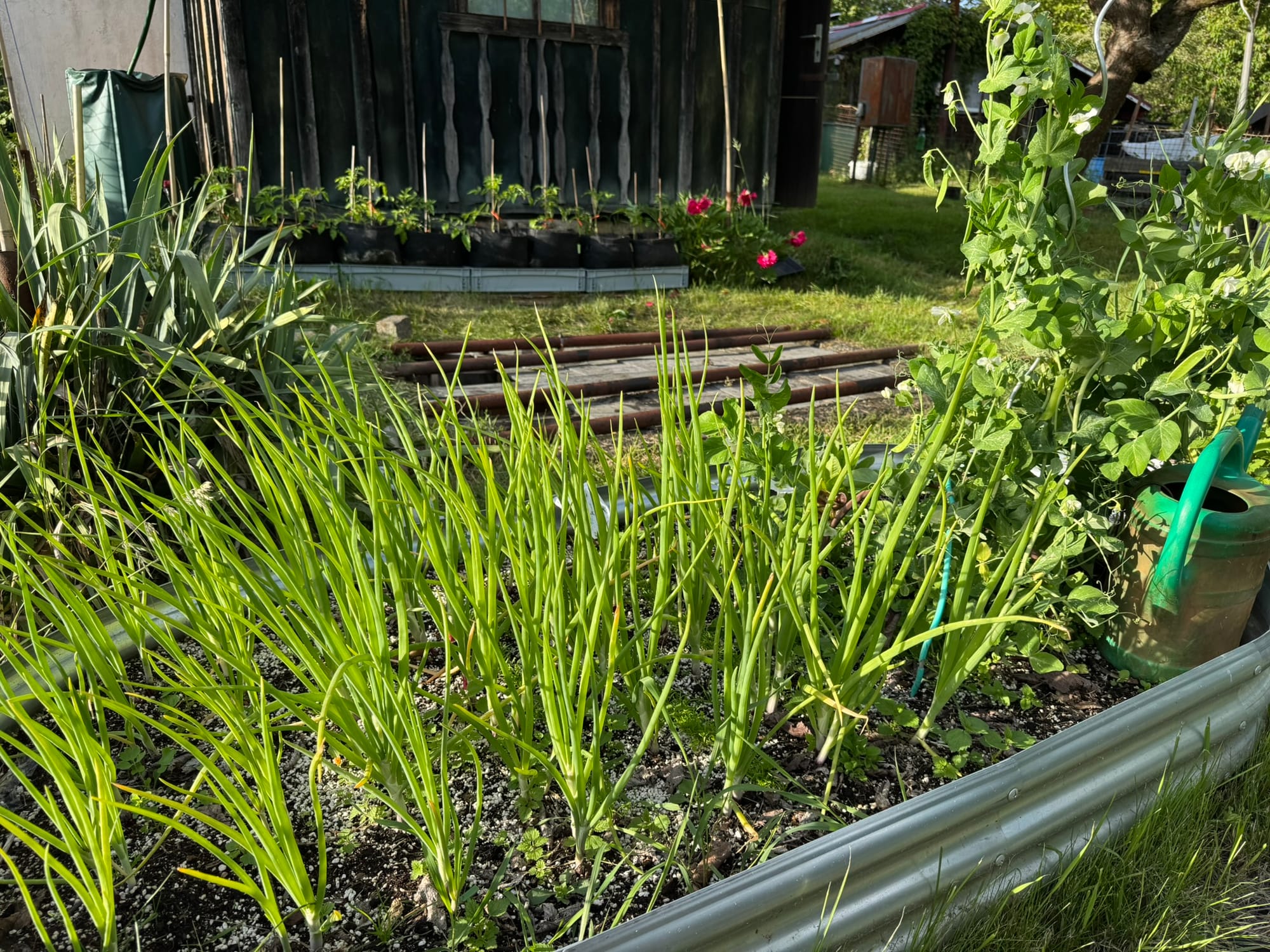
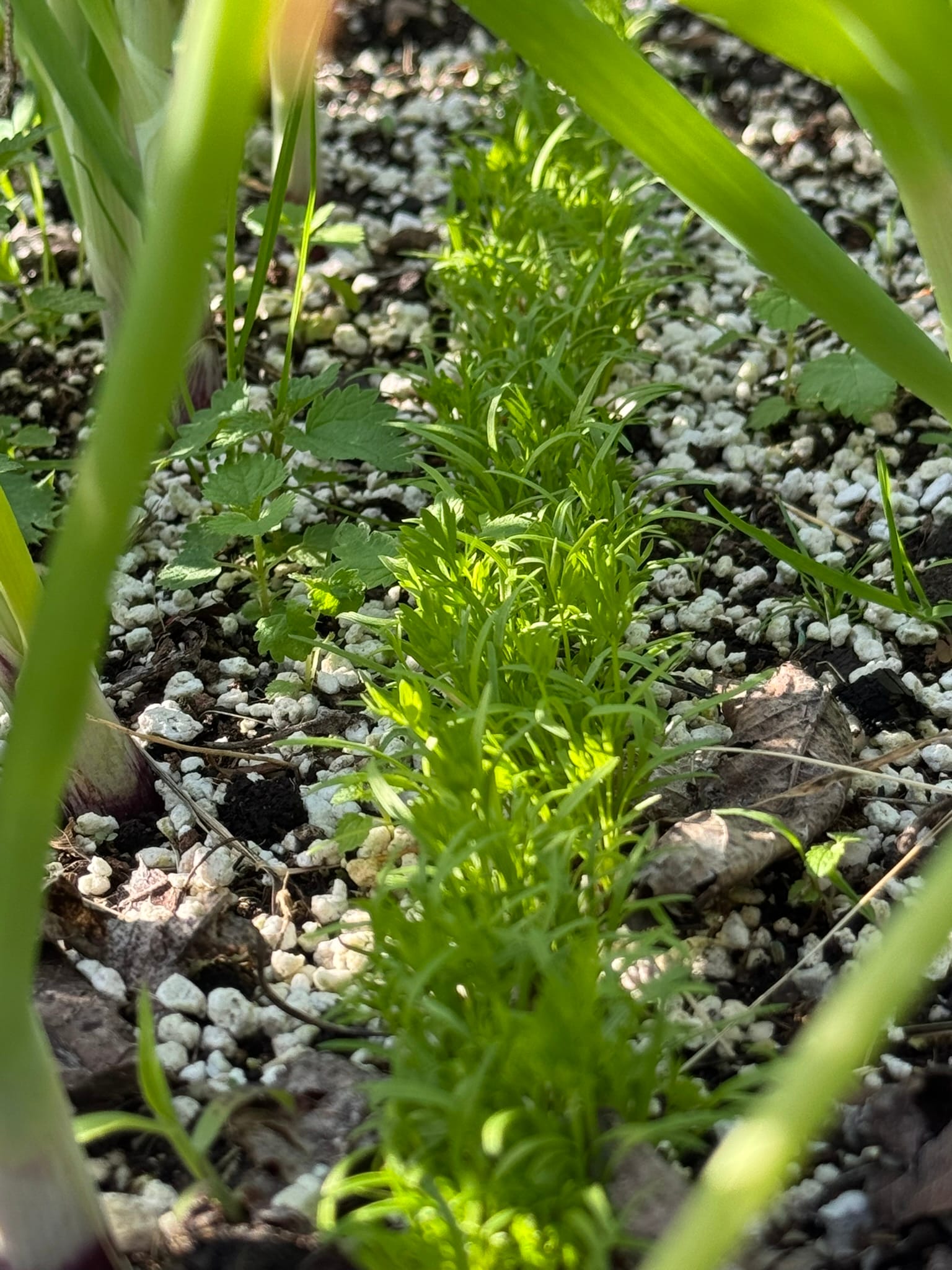
I will have to buffer with some peat later in the season to offset the buildup of perlite.
Peas are entering the last stage of their lives — the fruiting phase. I give them something like a month to die back, and I’ll have to figure out what to plant there. I’m thinking about some late fall beet harvest or something like that. I’ll have to figure out the same for the other garlic bed. Kohlrabi should be just fine if I plant them in mid-August, just in time to harvest and replace my current batch of beets.
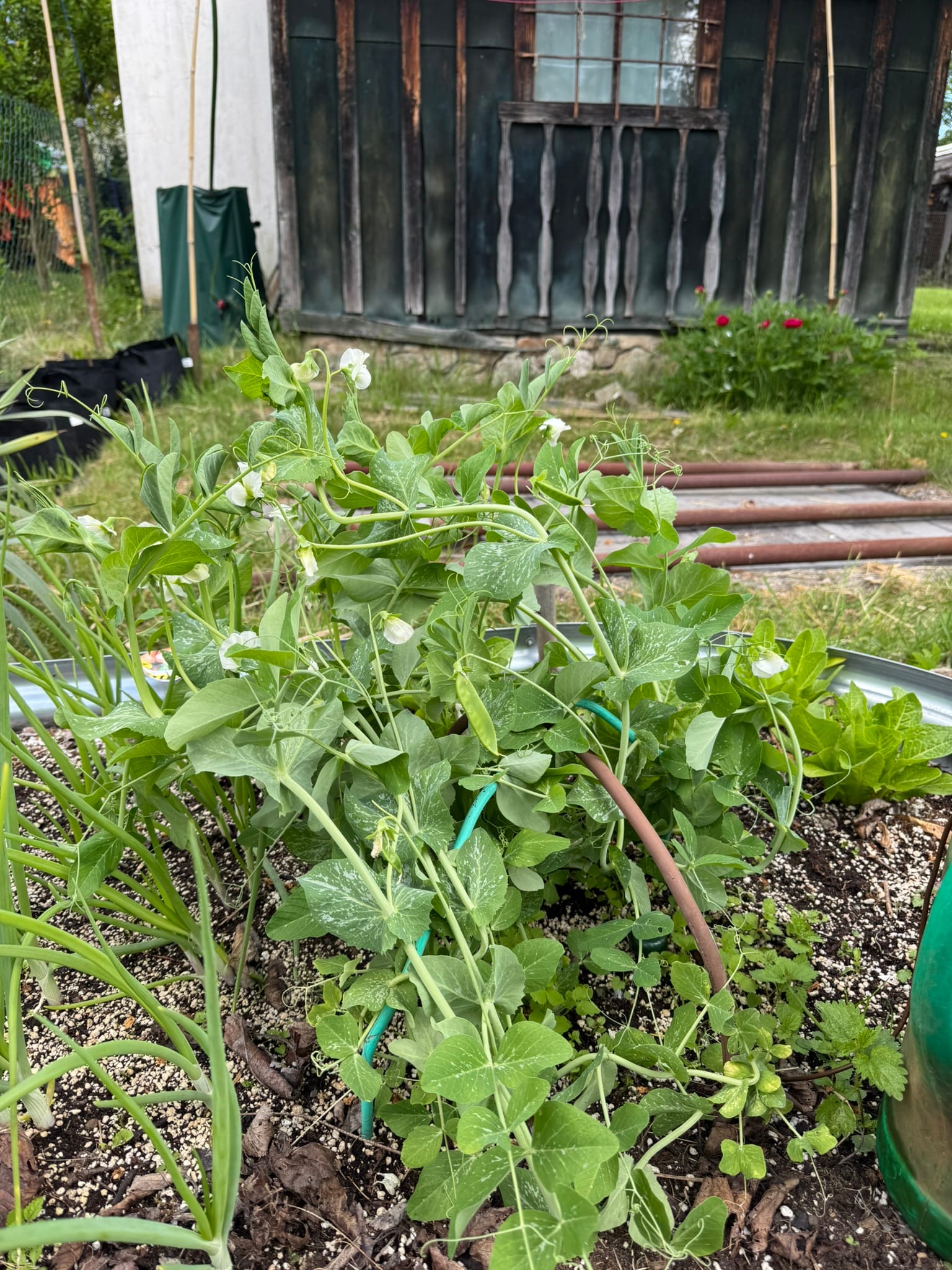
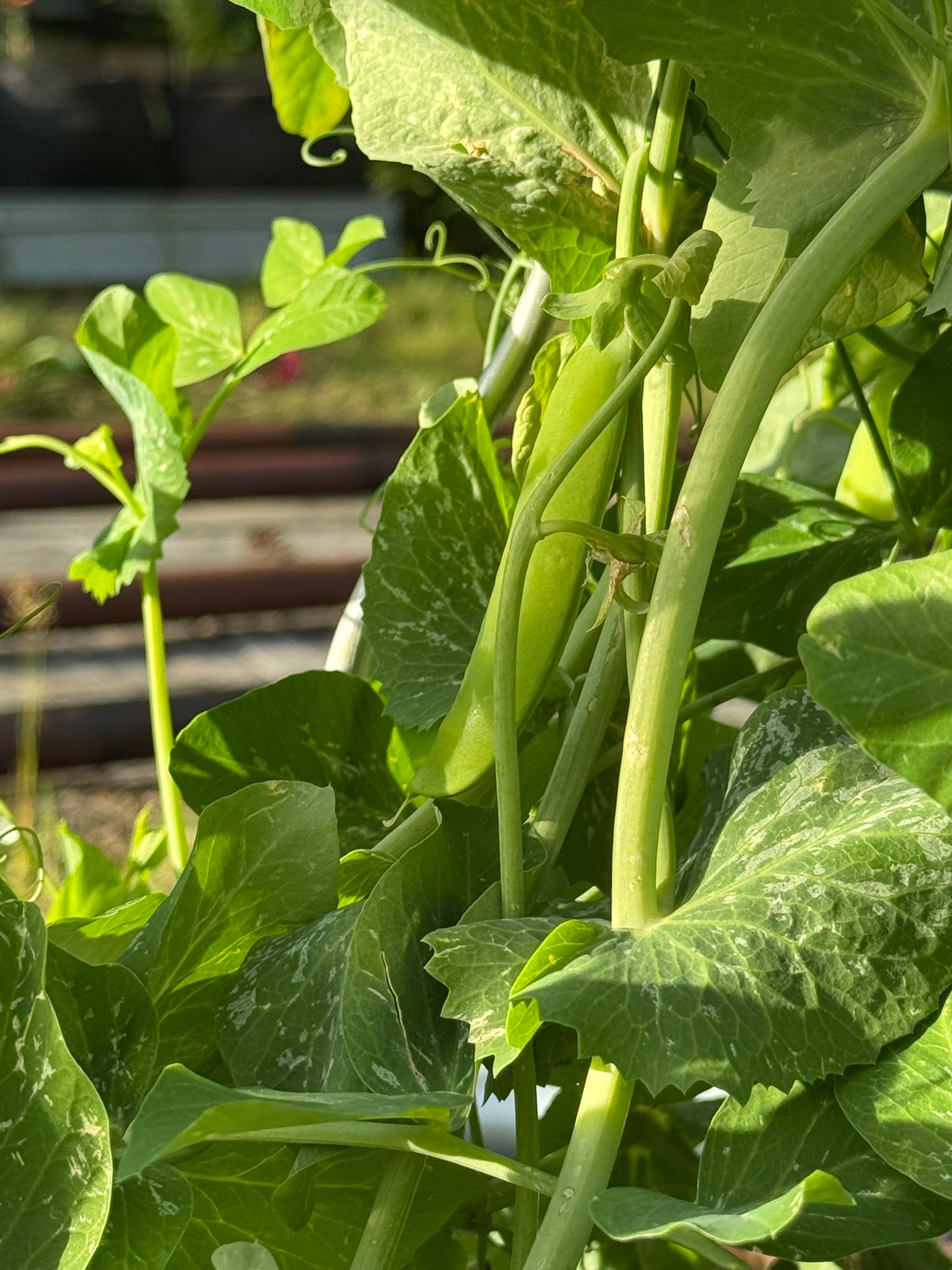
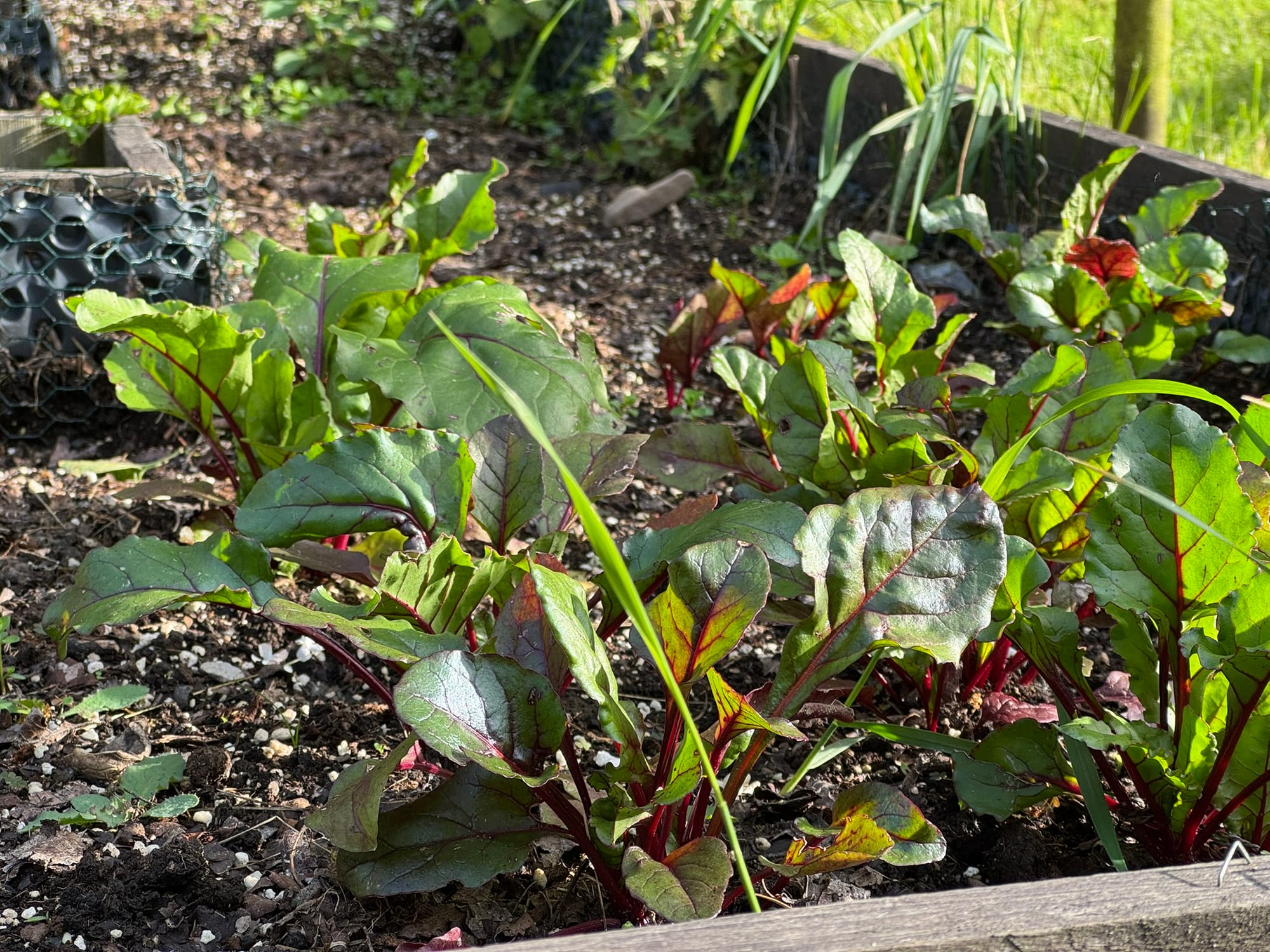
And the beets will soon have friends. I’ve sown 24 pickling cucumbers and I’ll have to squeeze them somewhere between the Parmex and the beets. I have no idea how. But so far, they’re chilling in the BROR, which I consider the best gardening tool I built this year. So much space.

And the space I created earlier? The one where the wood storage stood? I removed the old, rotting fence and installed new mesh fencing to let the morning sun shine on my melons. They’re still chilling in the BROR as well, but my hopes are high this year. Probably only to be crushed again. But we’ll see.
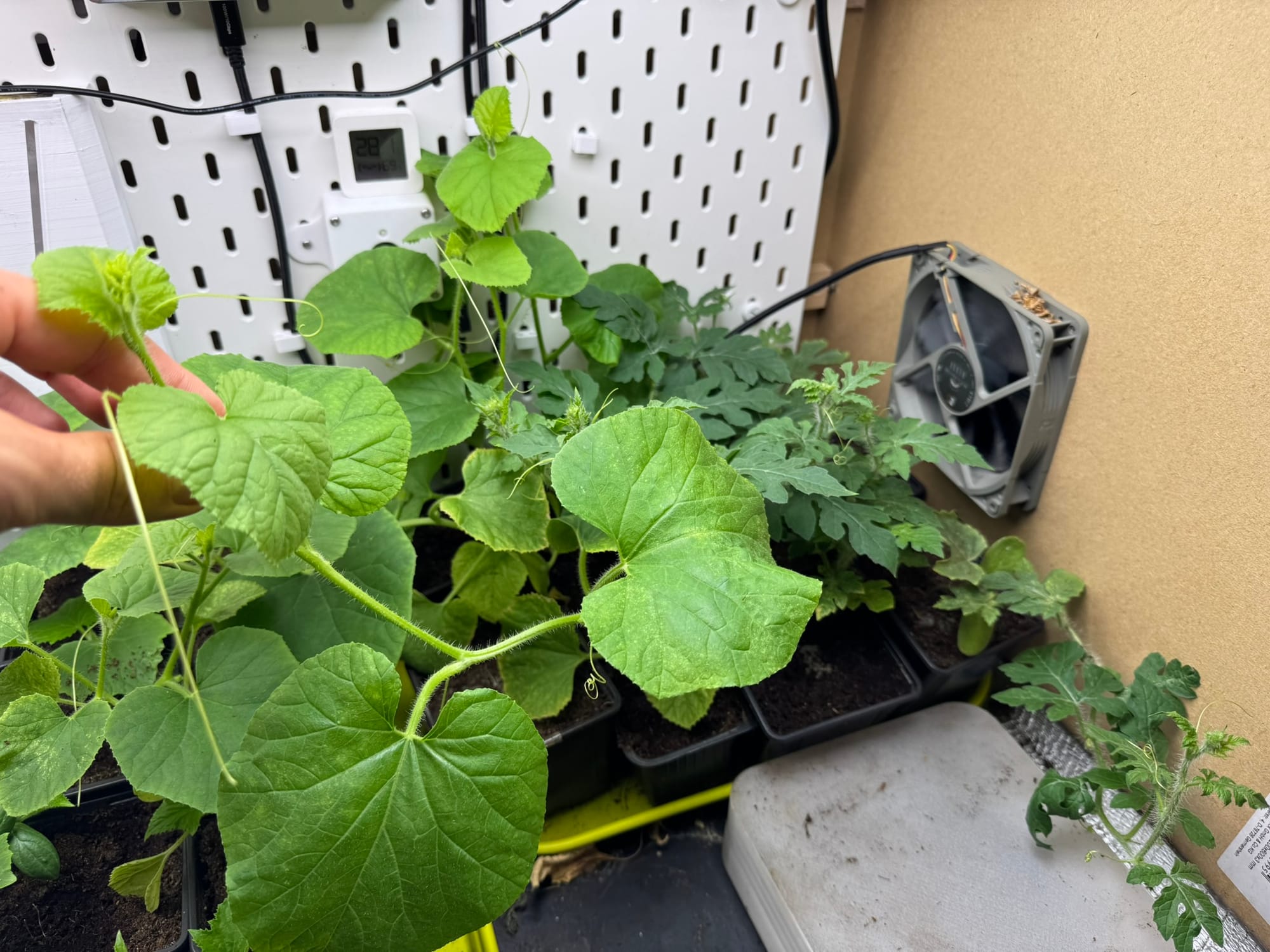
the evermore #4011
My cherry tree survived. Every single freezing day. And now? It’s producing huge red cherries. I have no idea how I’ll process them, but I will. Somehow.
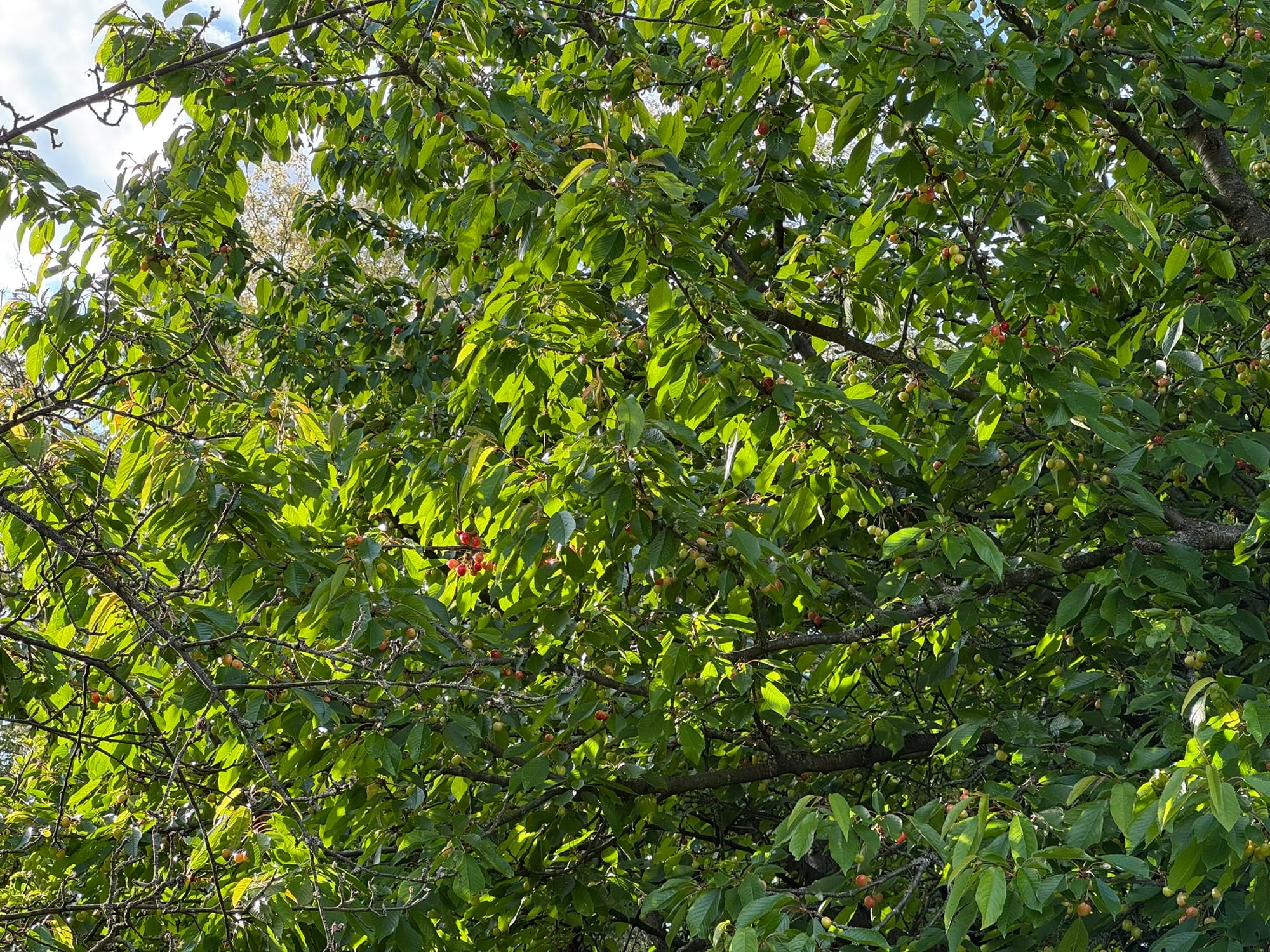
I’ve planted my bananas, my plátanos — #4011. I cleared a spot for two Ever Red bananas and placed a large watering collar around them to keep the soil moist and irrigated. Bananas don’t give a fuck how moist the soil is, as long as it’s kept wet all the time. For a few days, I covered them with a tiny greenhouse just to help them survive the first few nights.
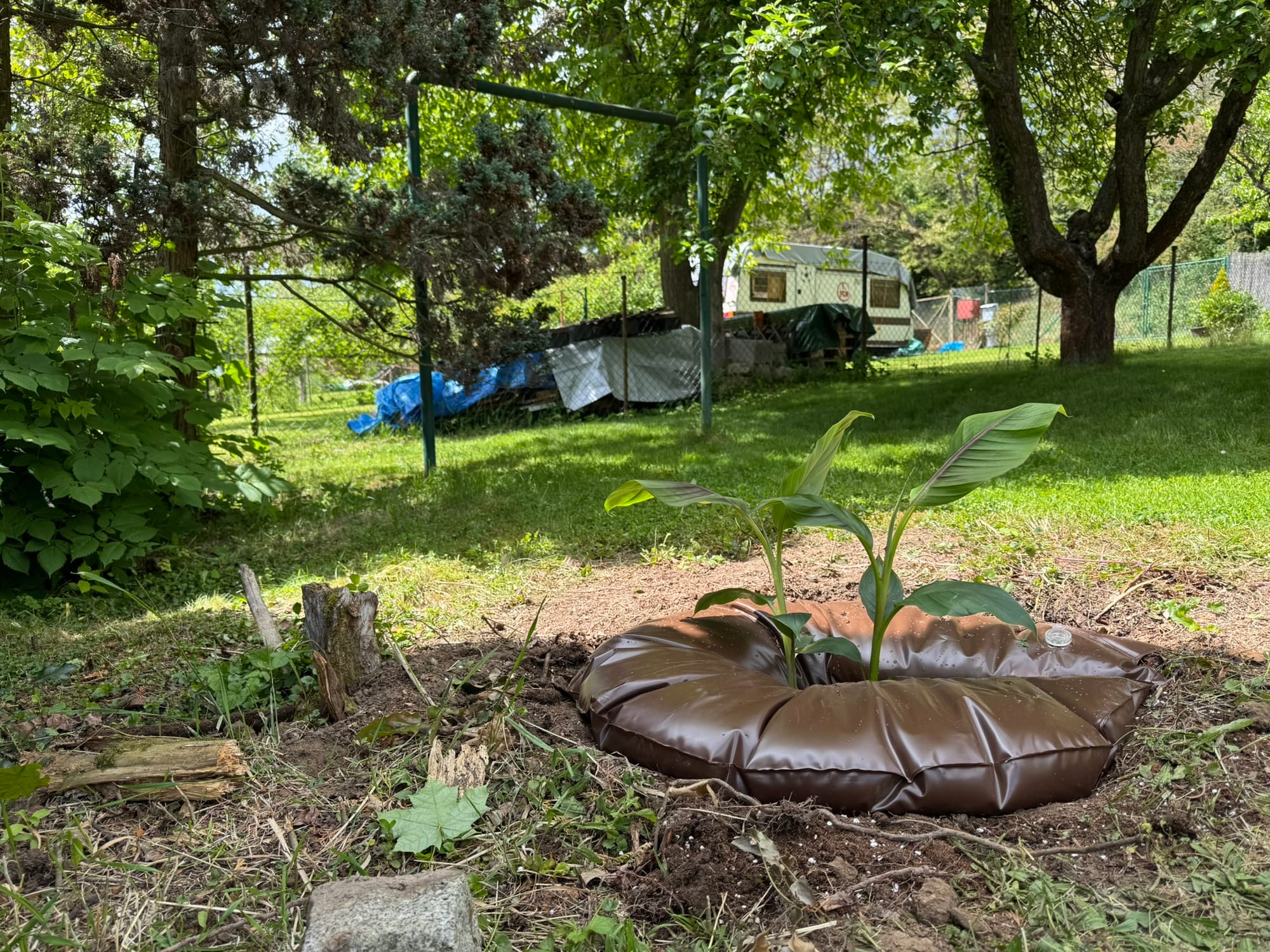
My gooseberry and new red currants are setting fruit. I’m especially happy to see the currant established and already producing. I expected the first harvest next year, but I’m not going to complain, right?
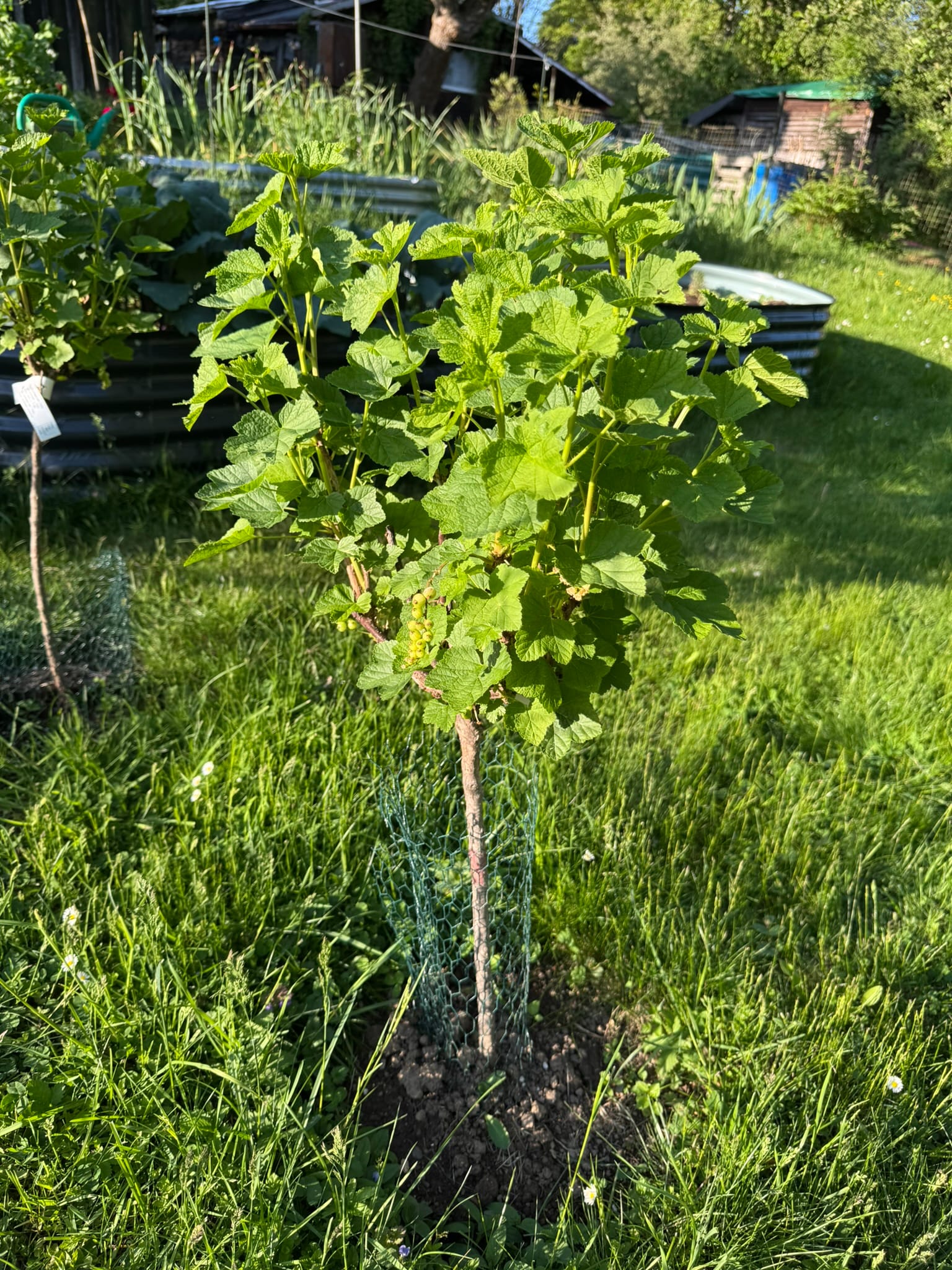
The weather this year is annoying. May was exceptionally cold, and the approaching June is already like “I will make up for this!” That means not only higher temperatures, but also more rain. And thunderstorms. We have a weather warning active, and I’m ready to tension my hail nets. But for now, here is a complementary dog picture.
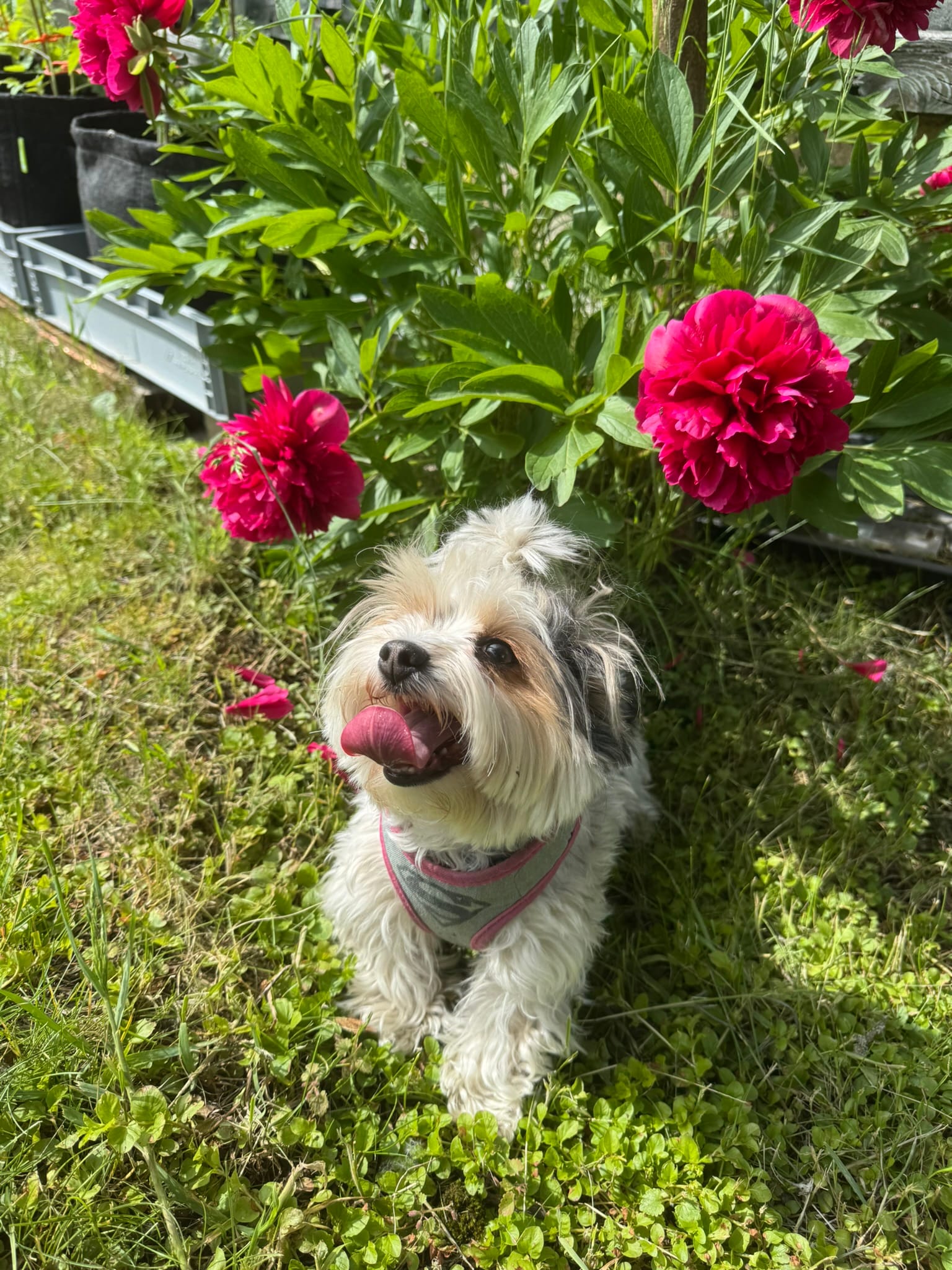
Member discussion